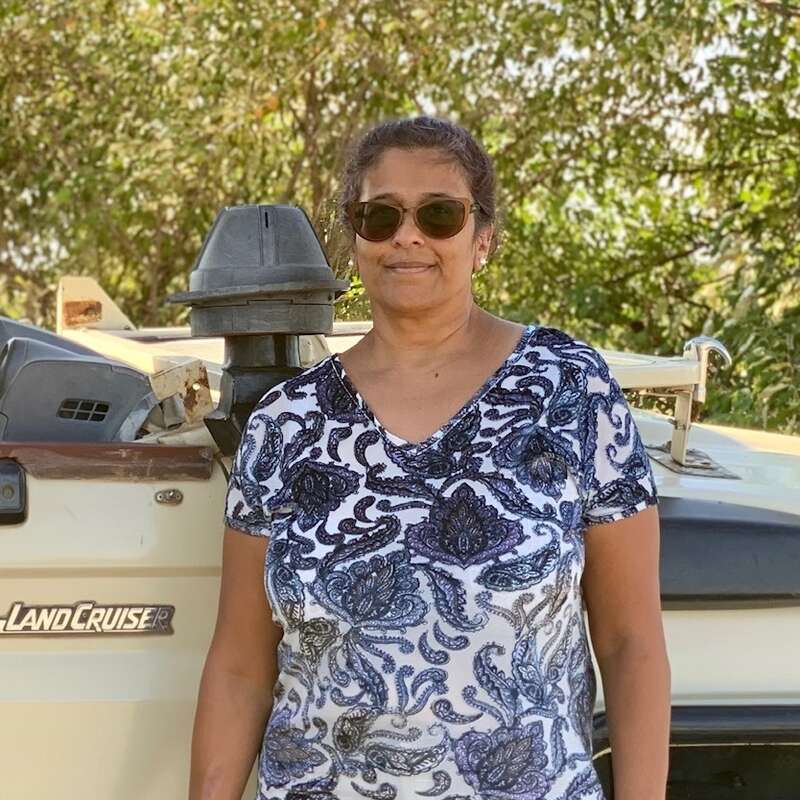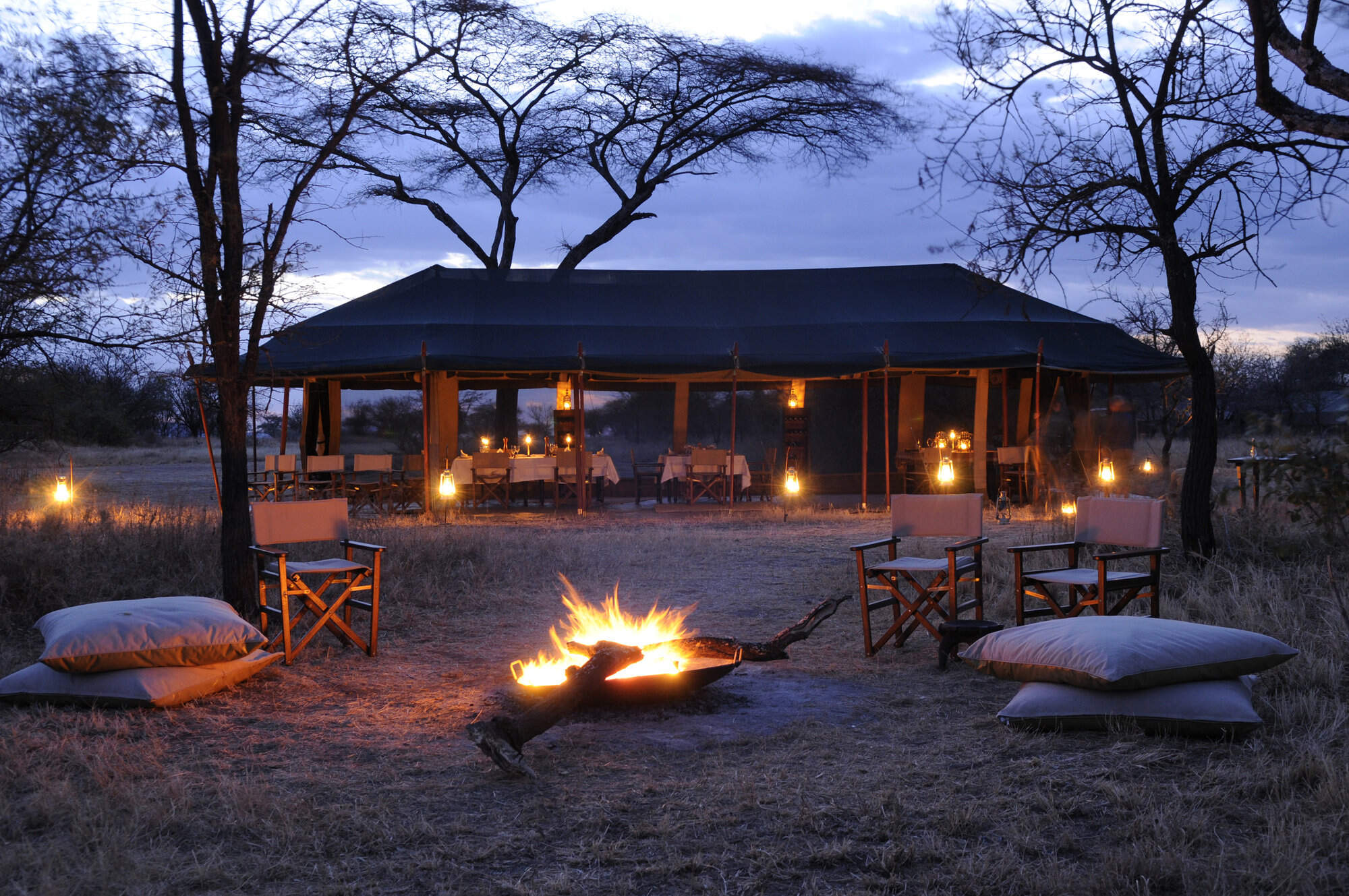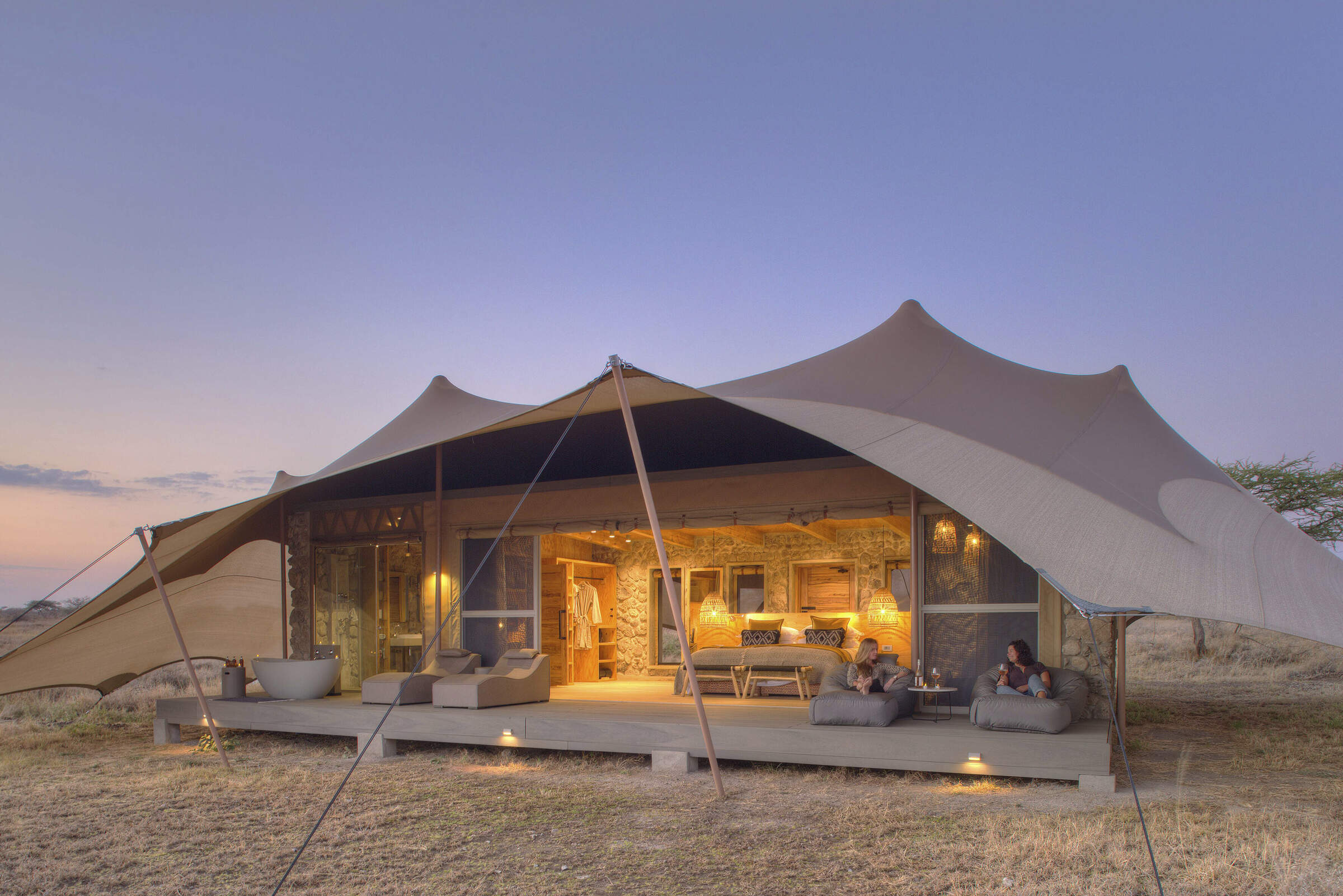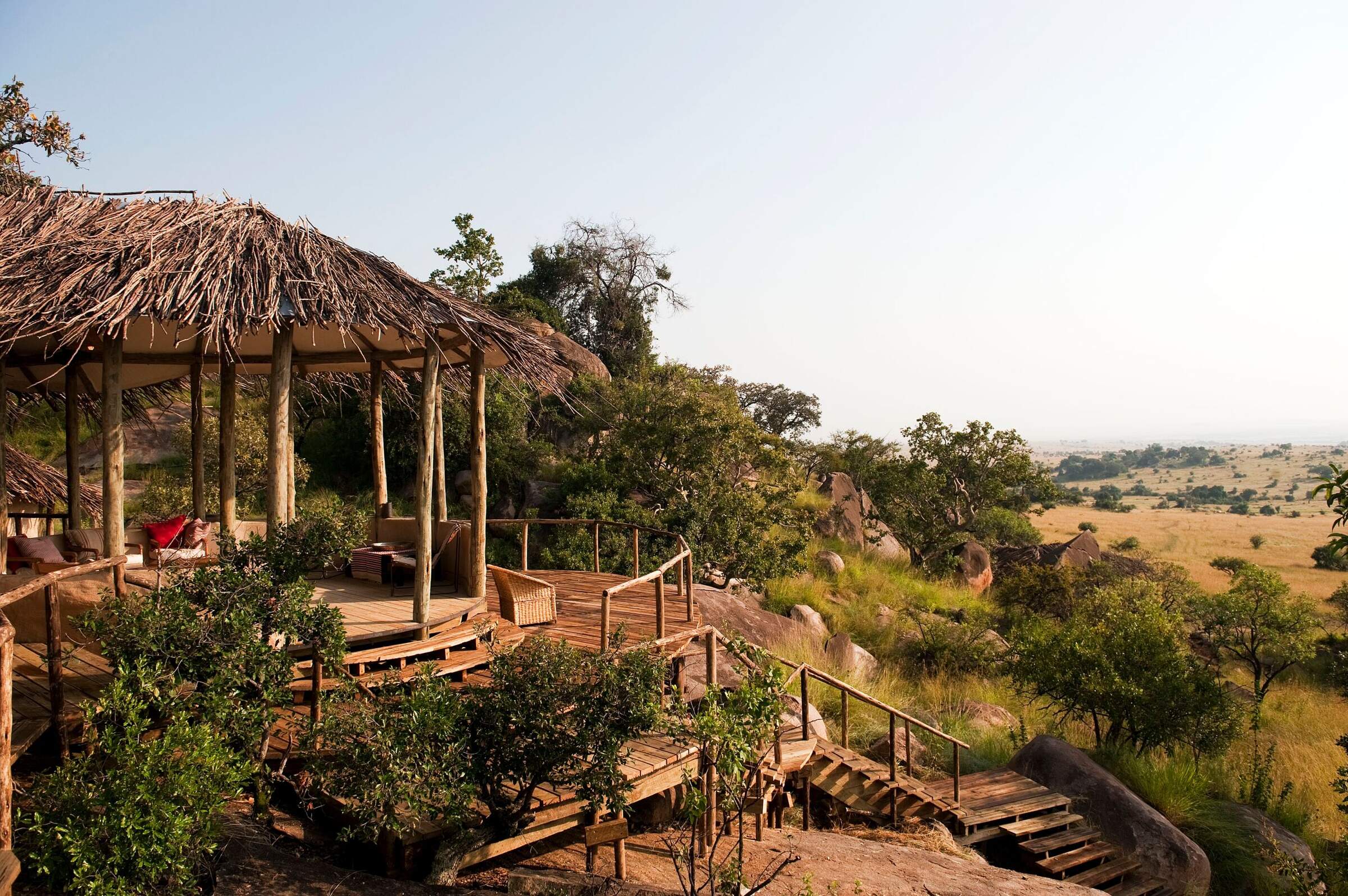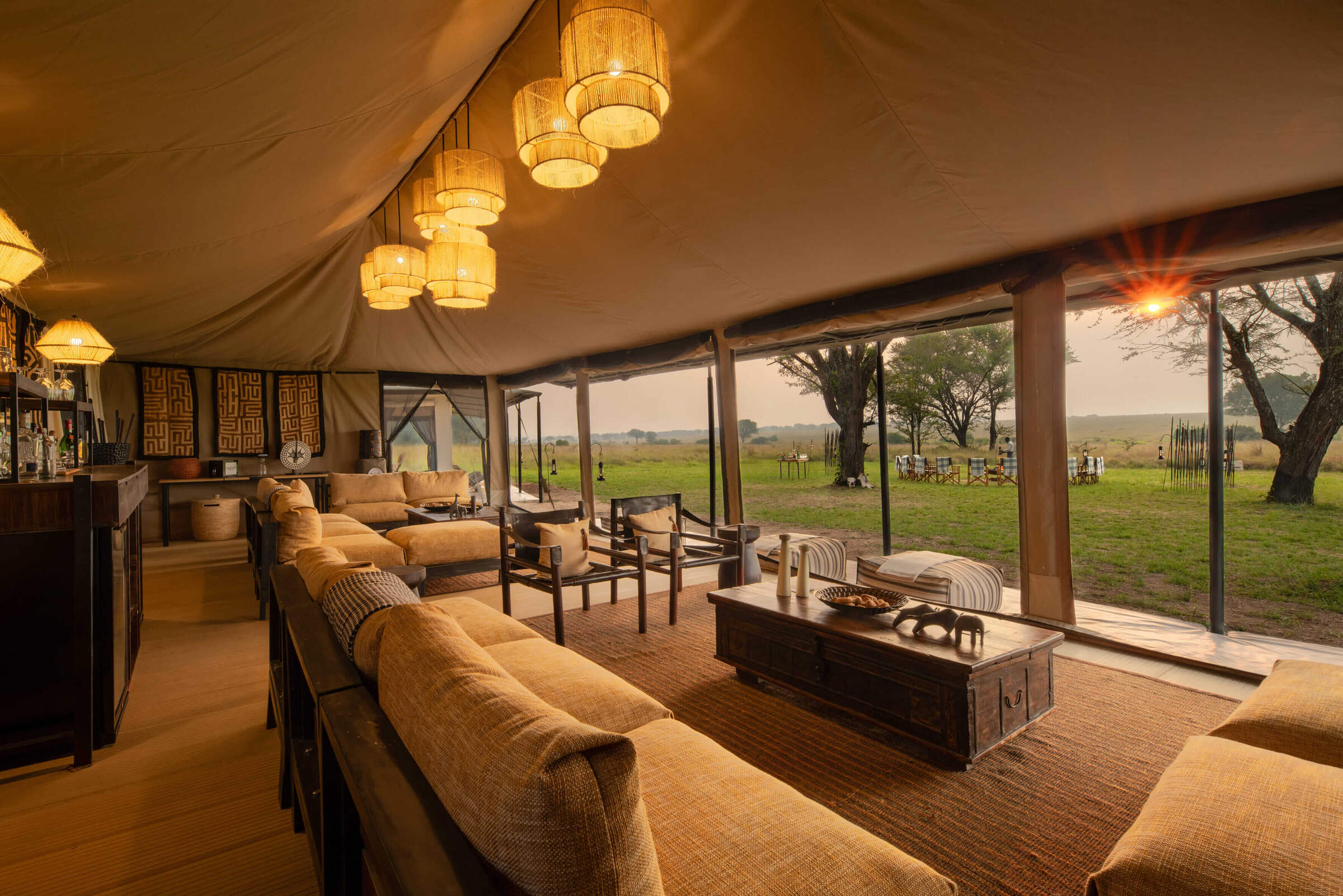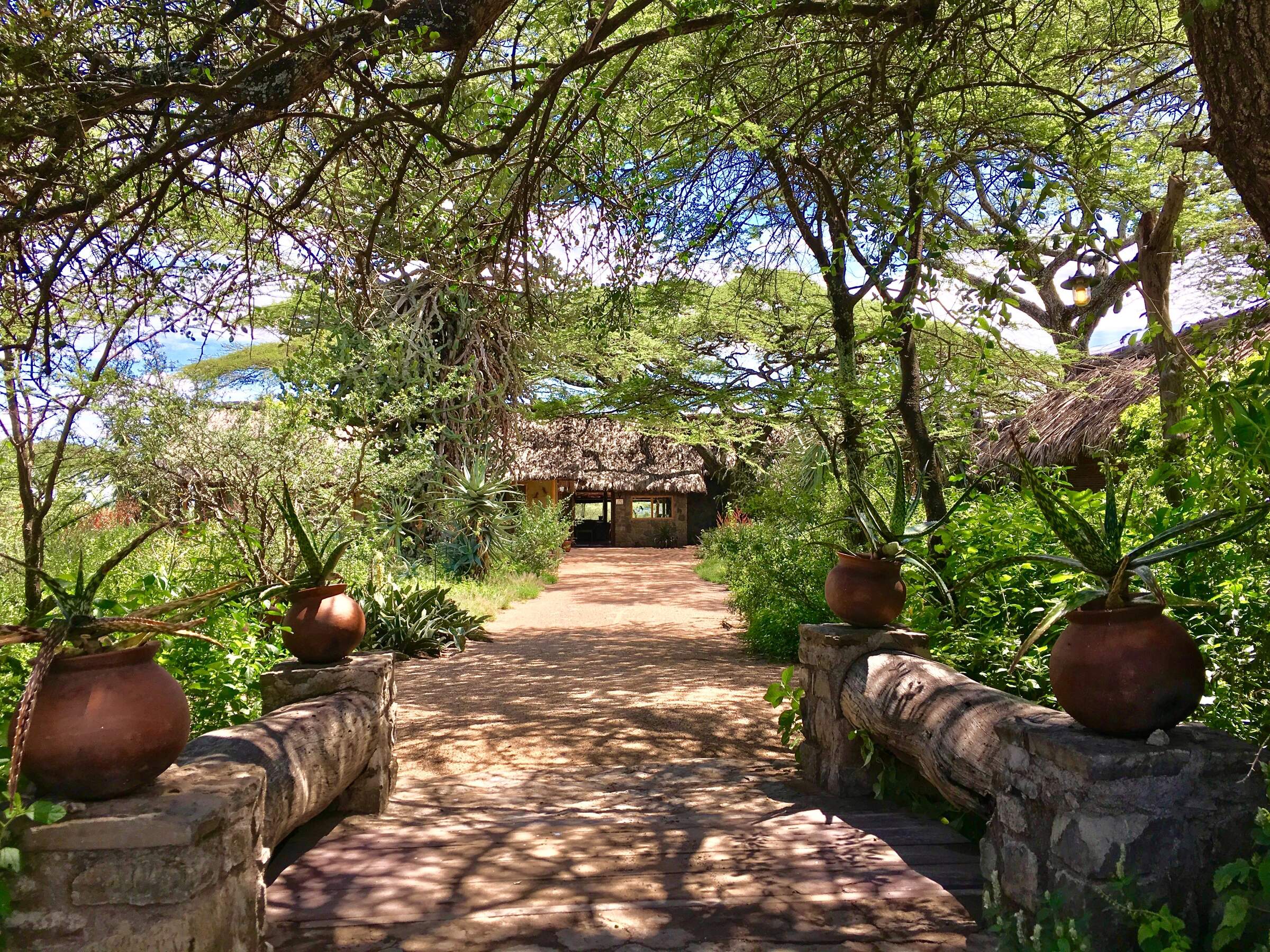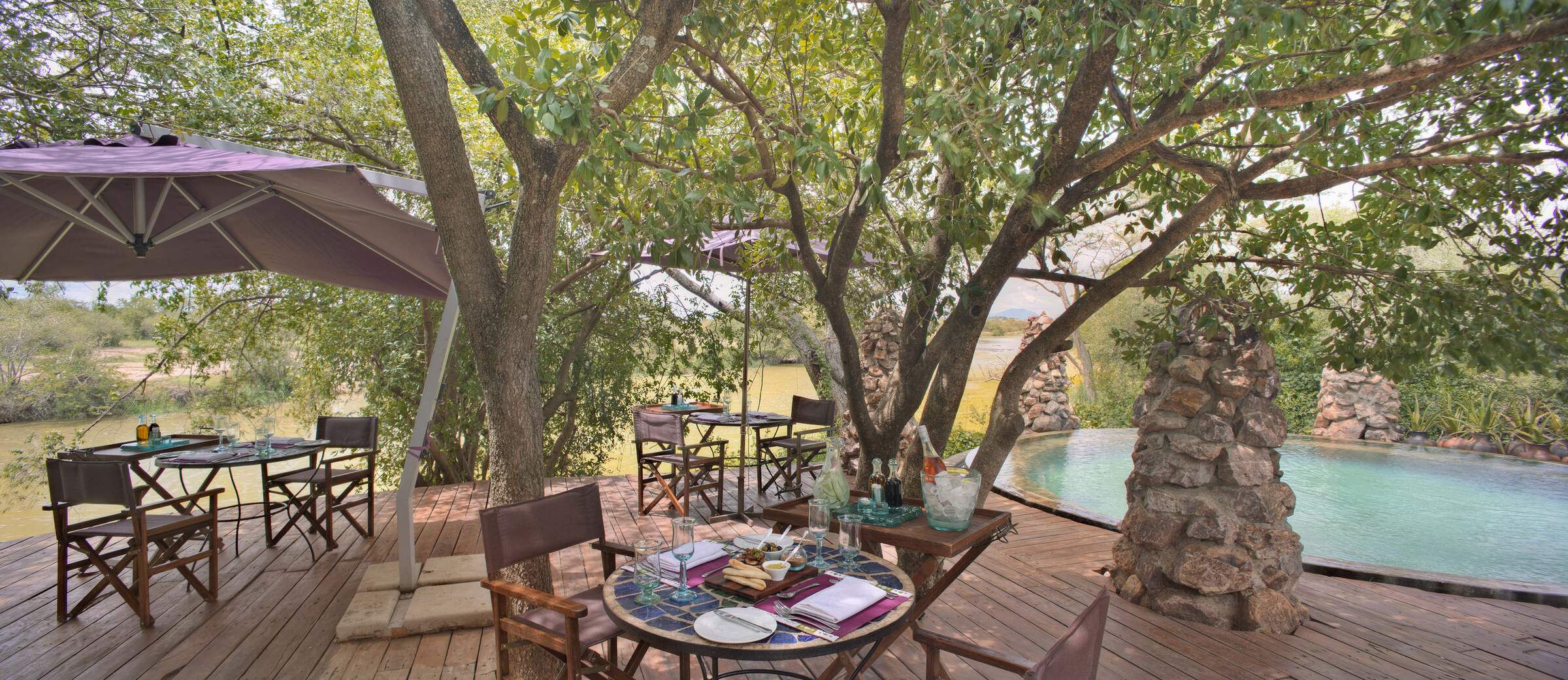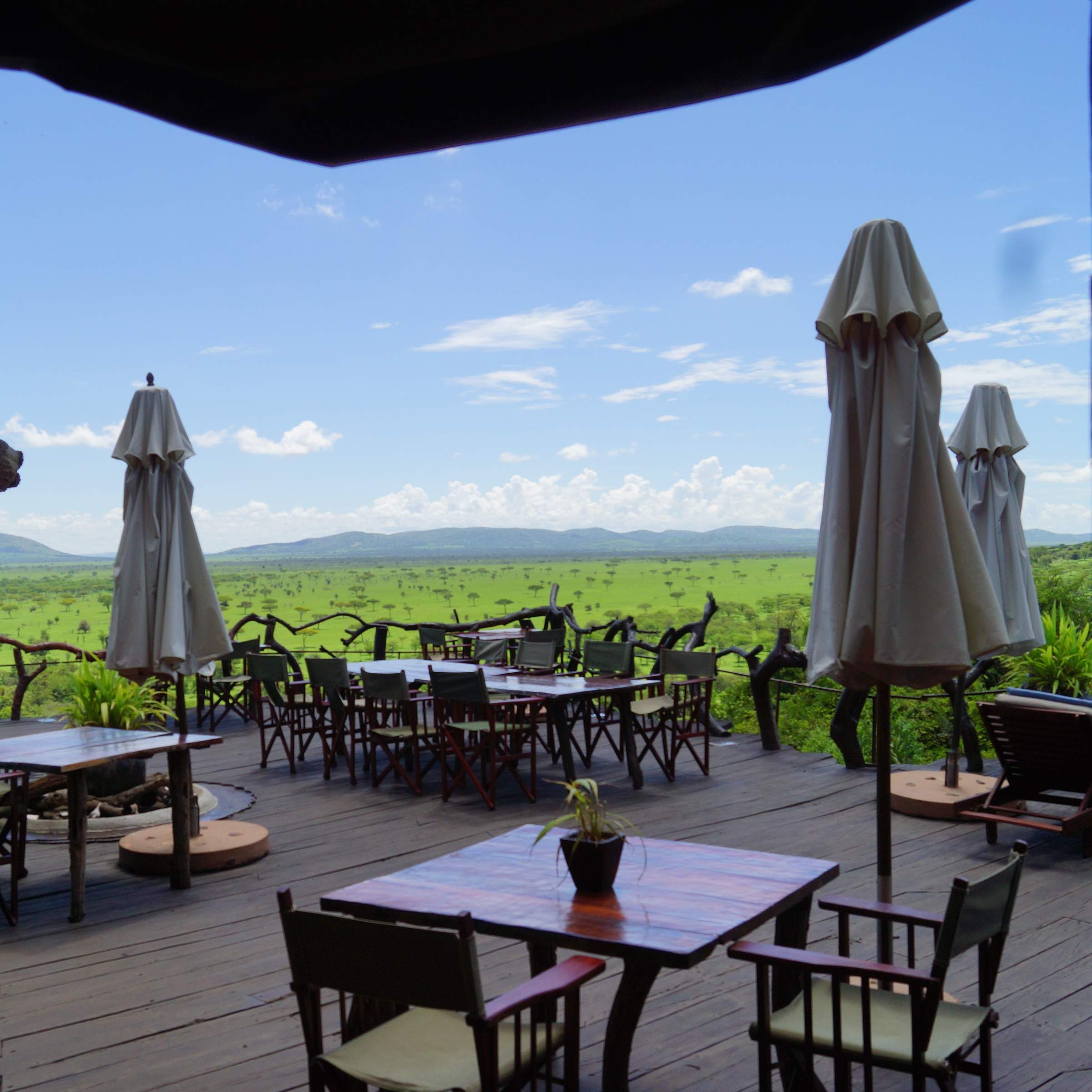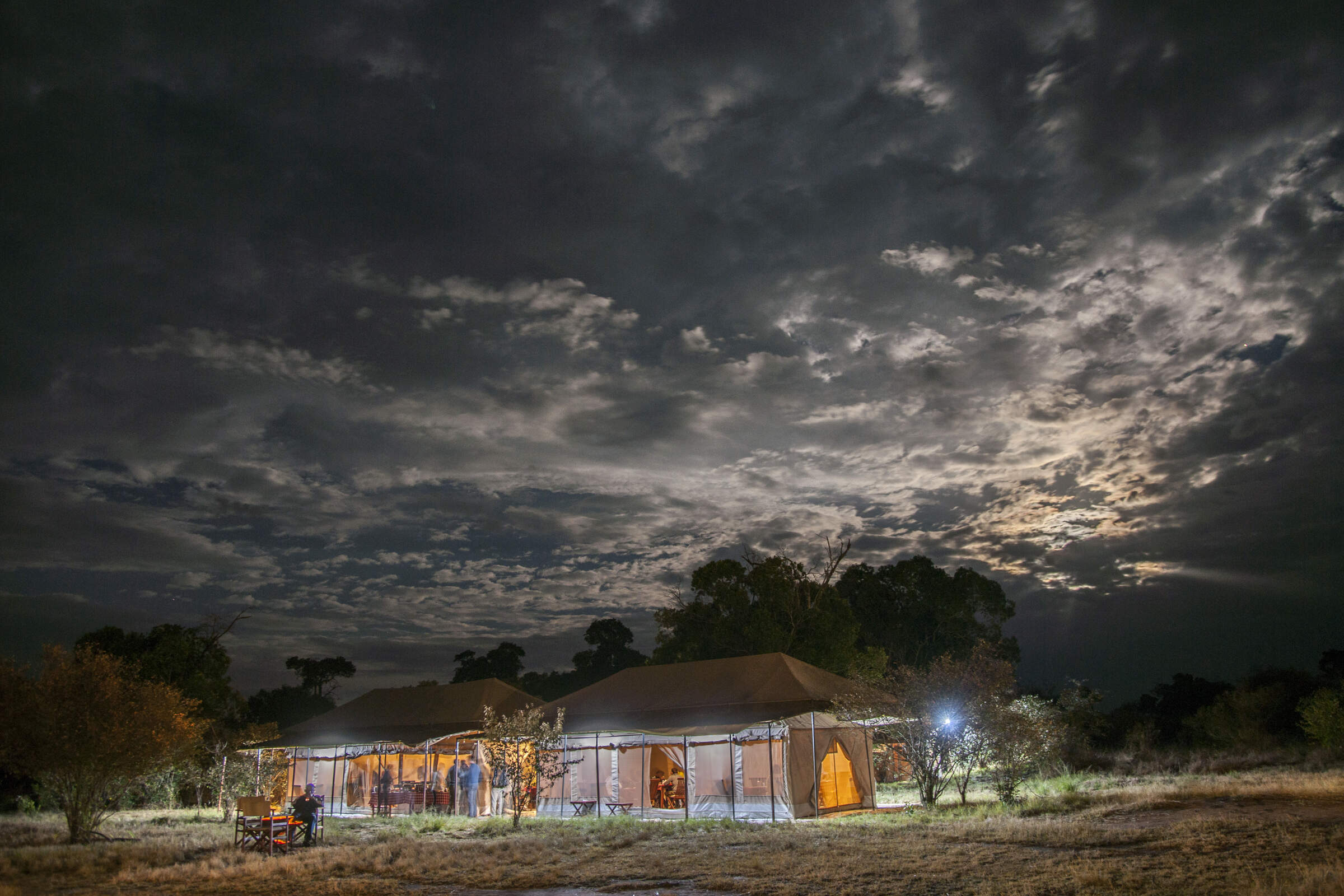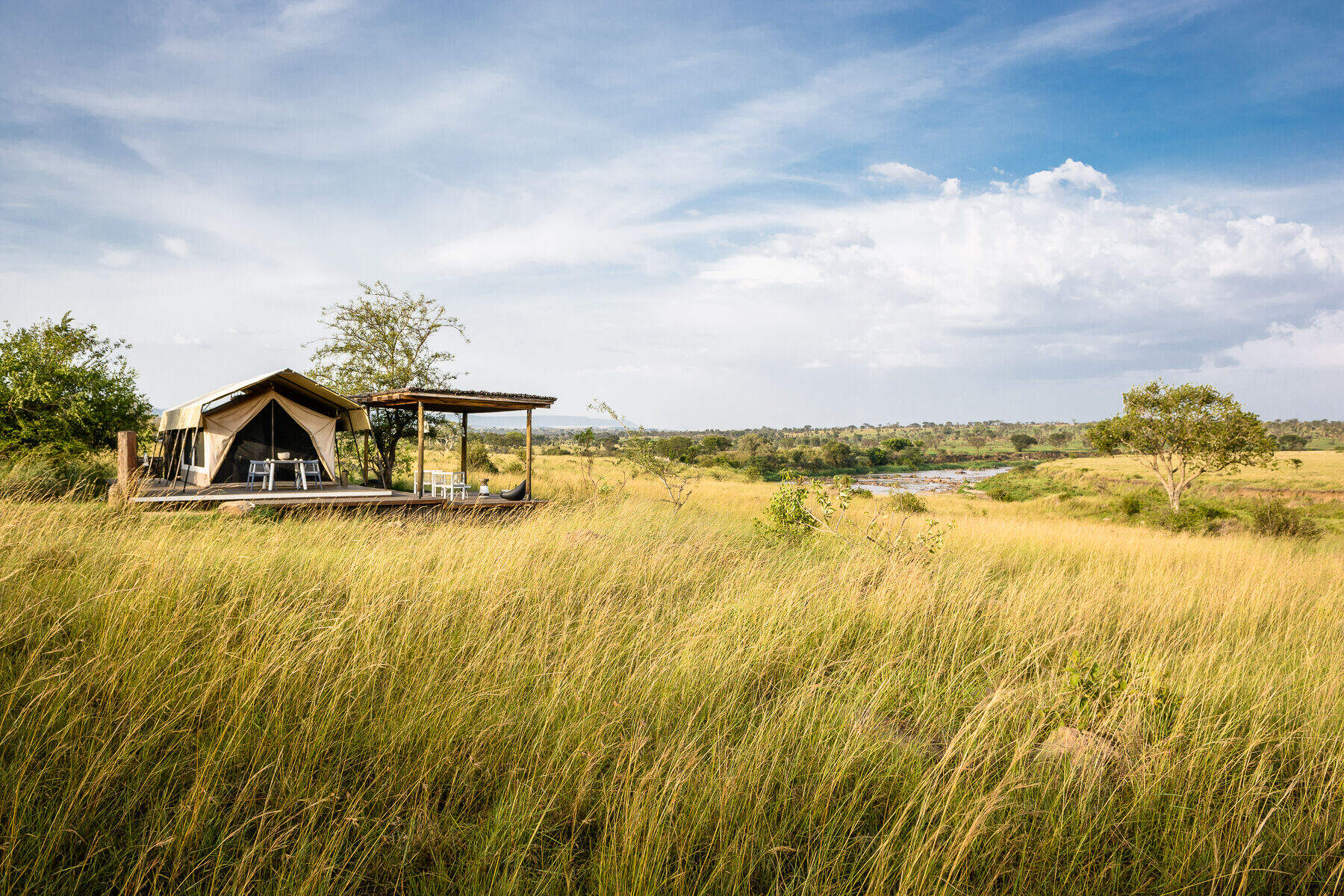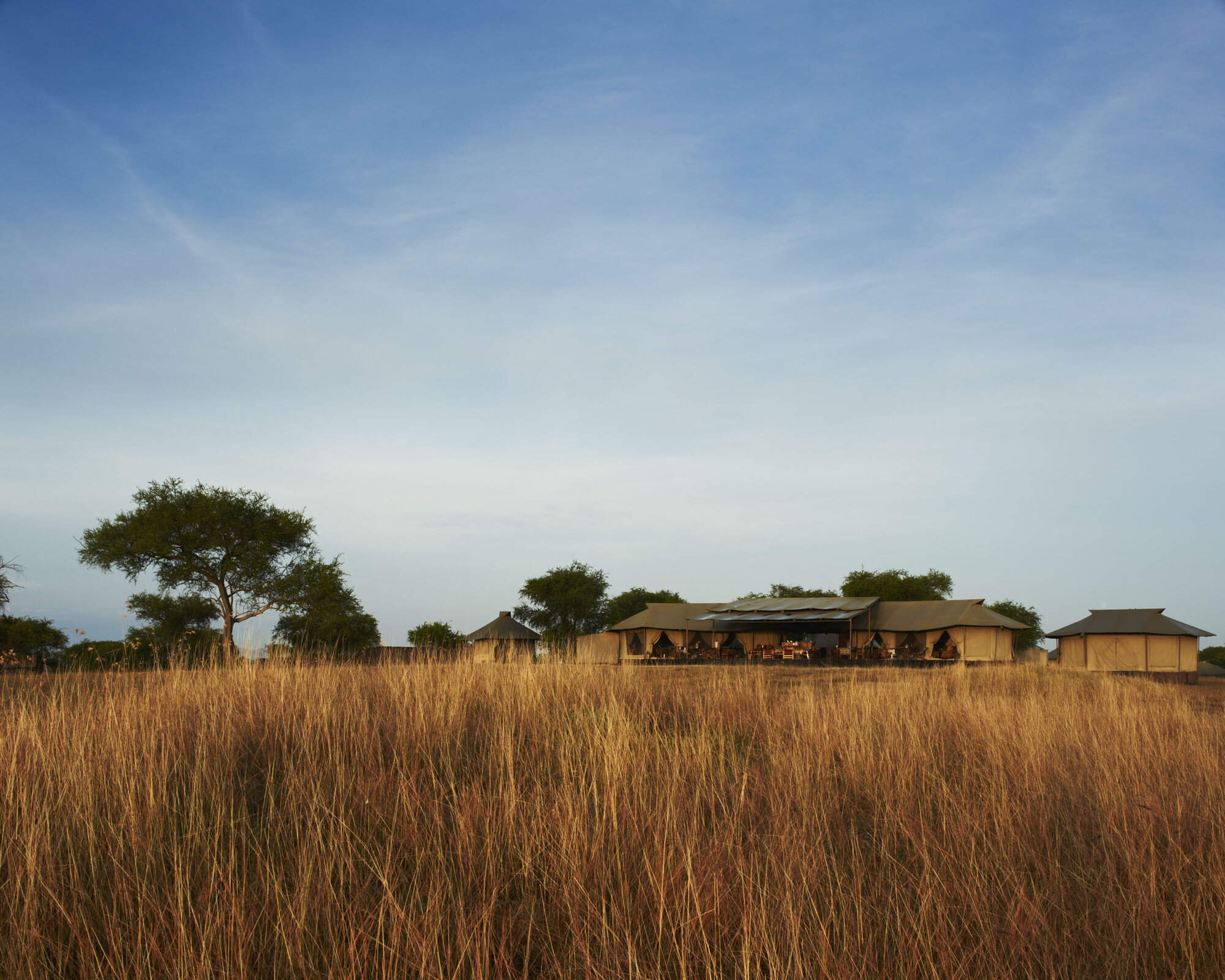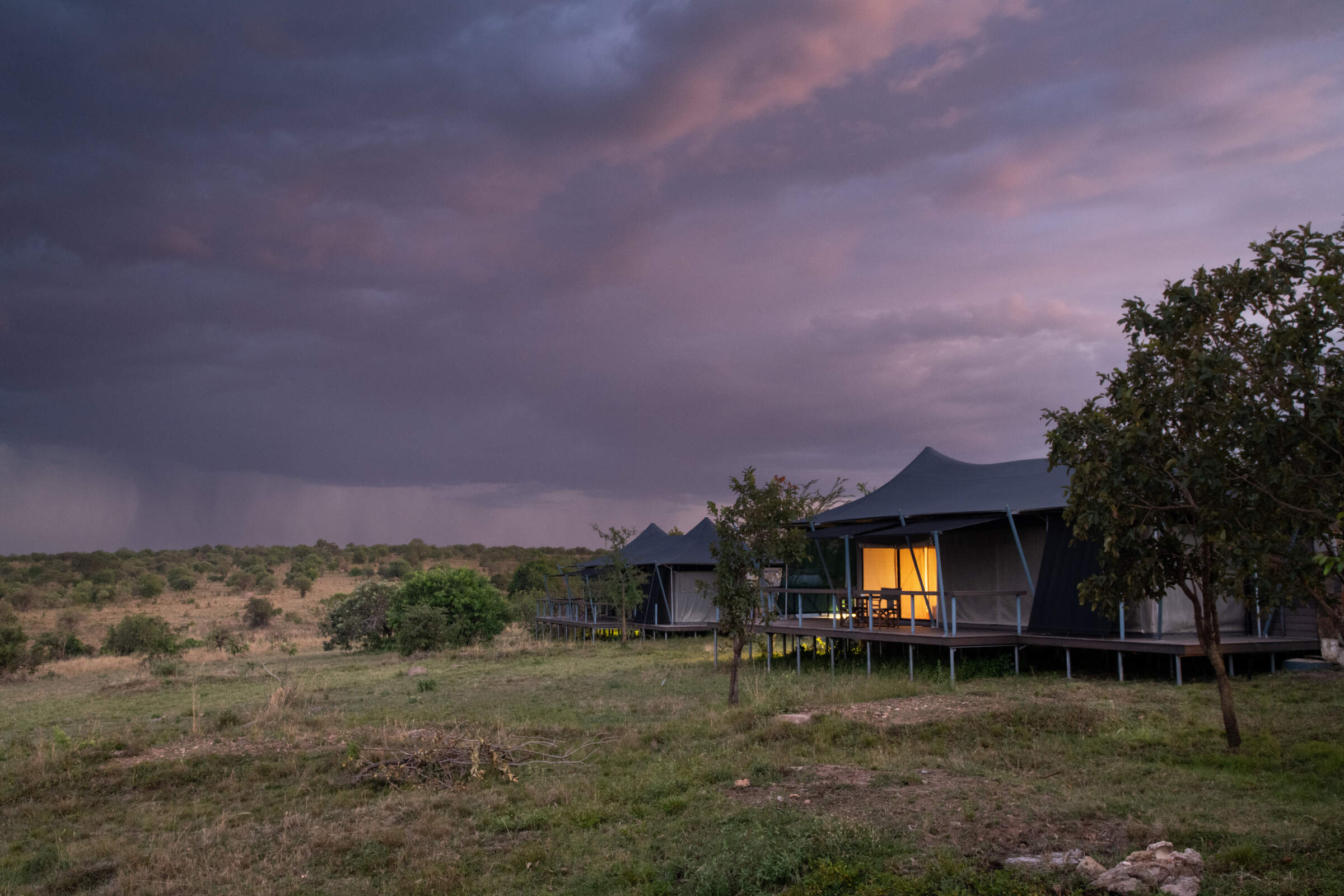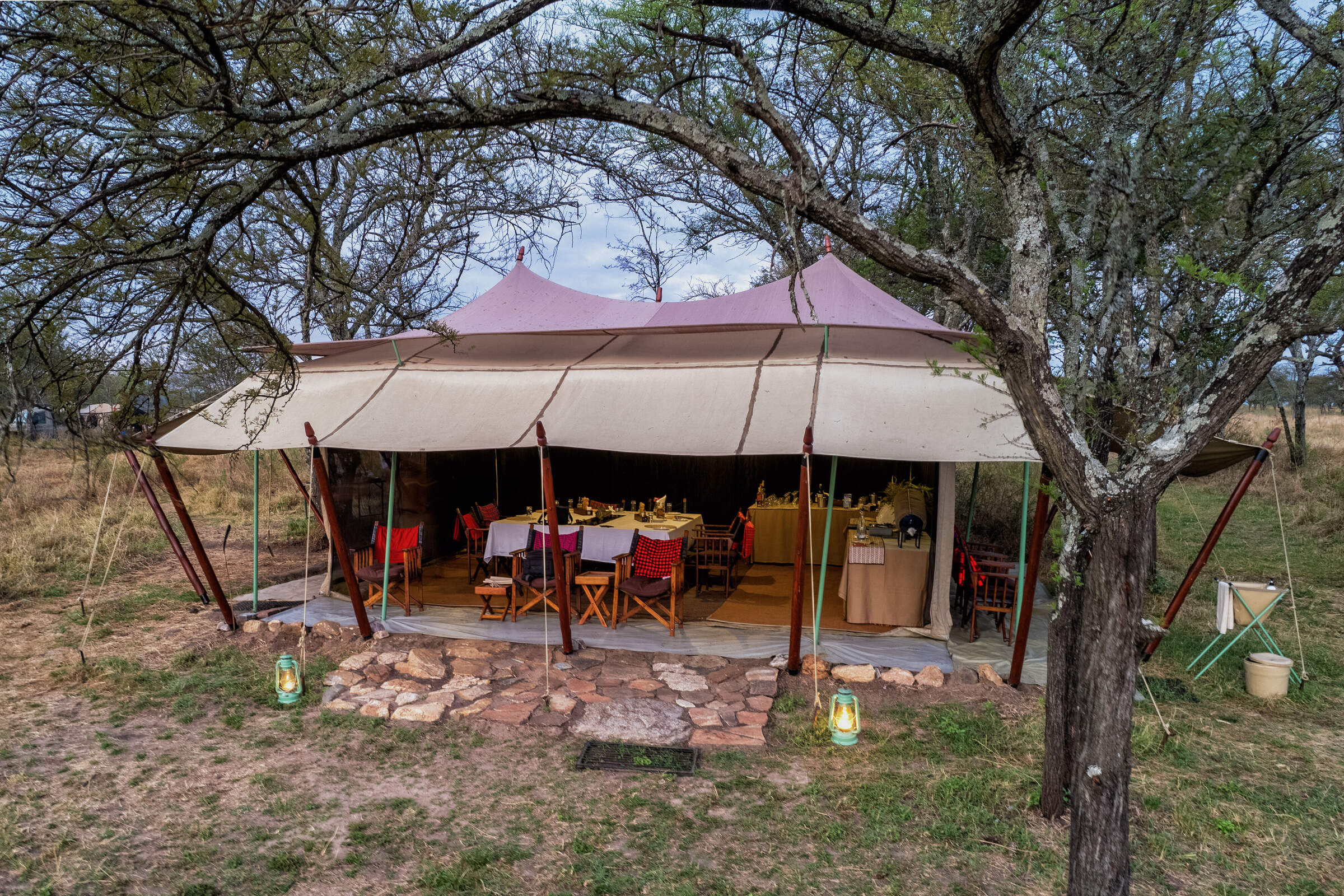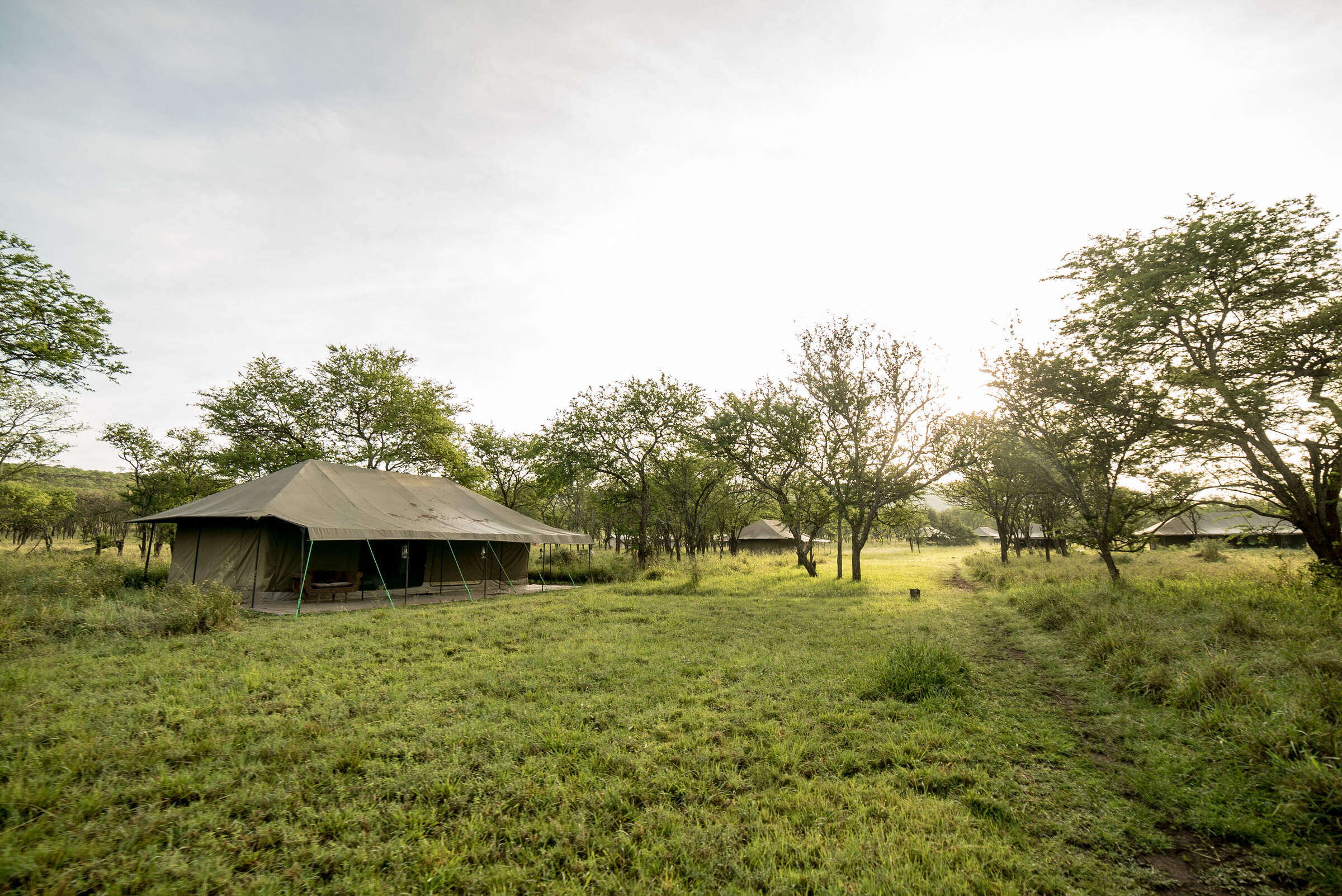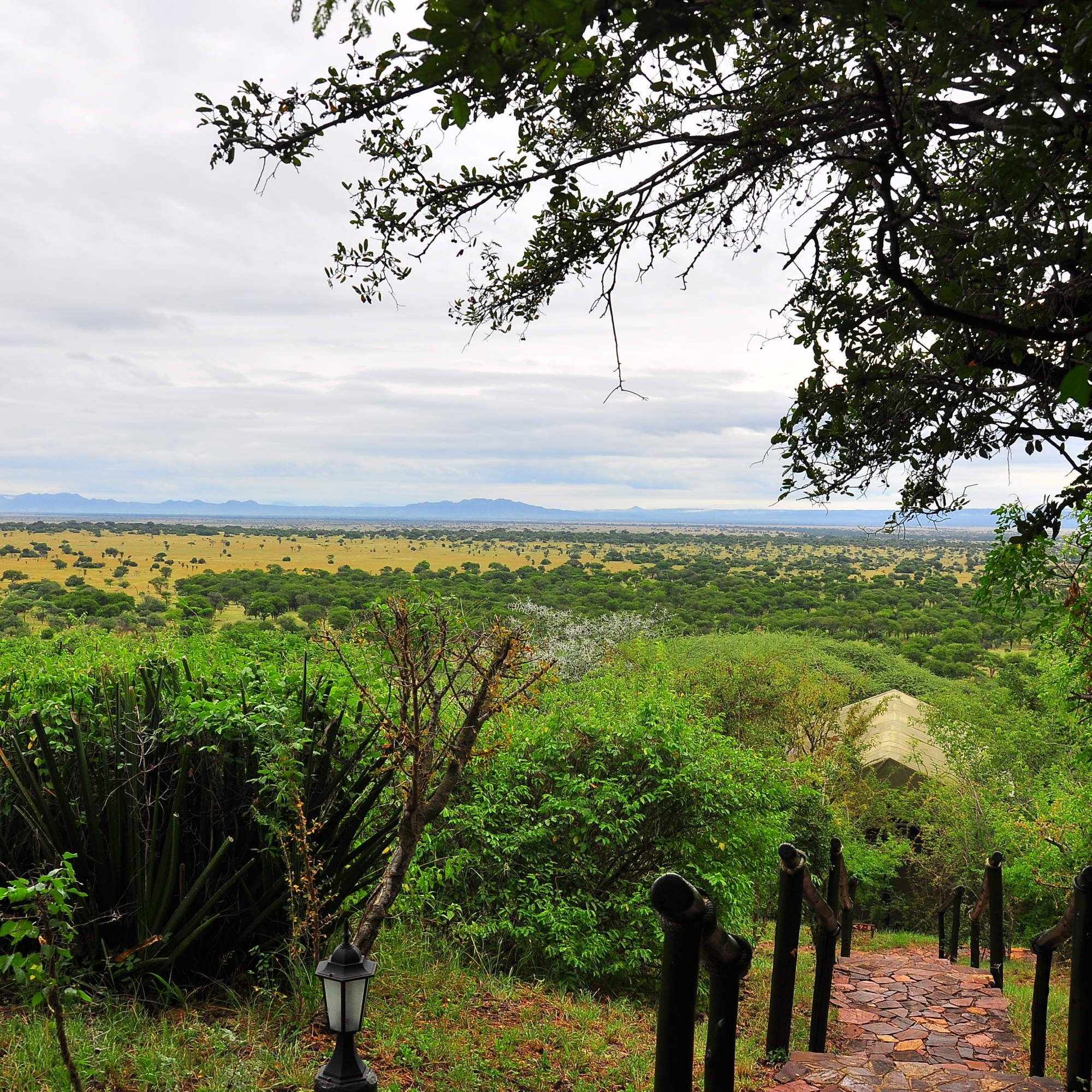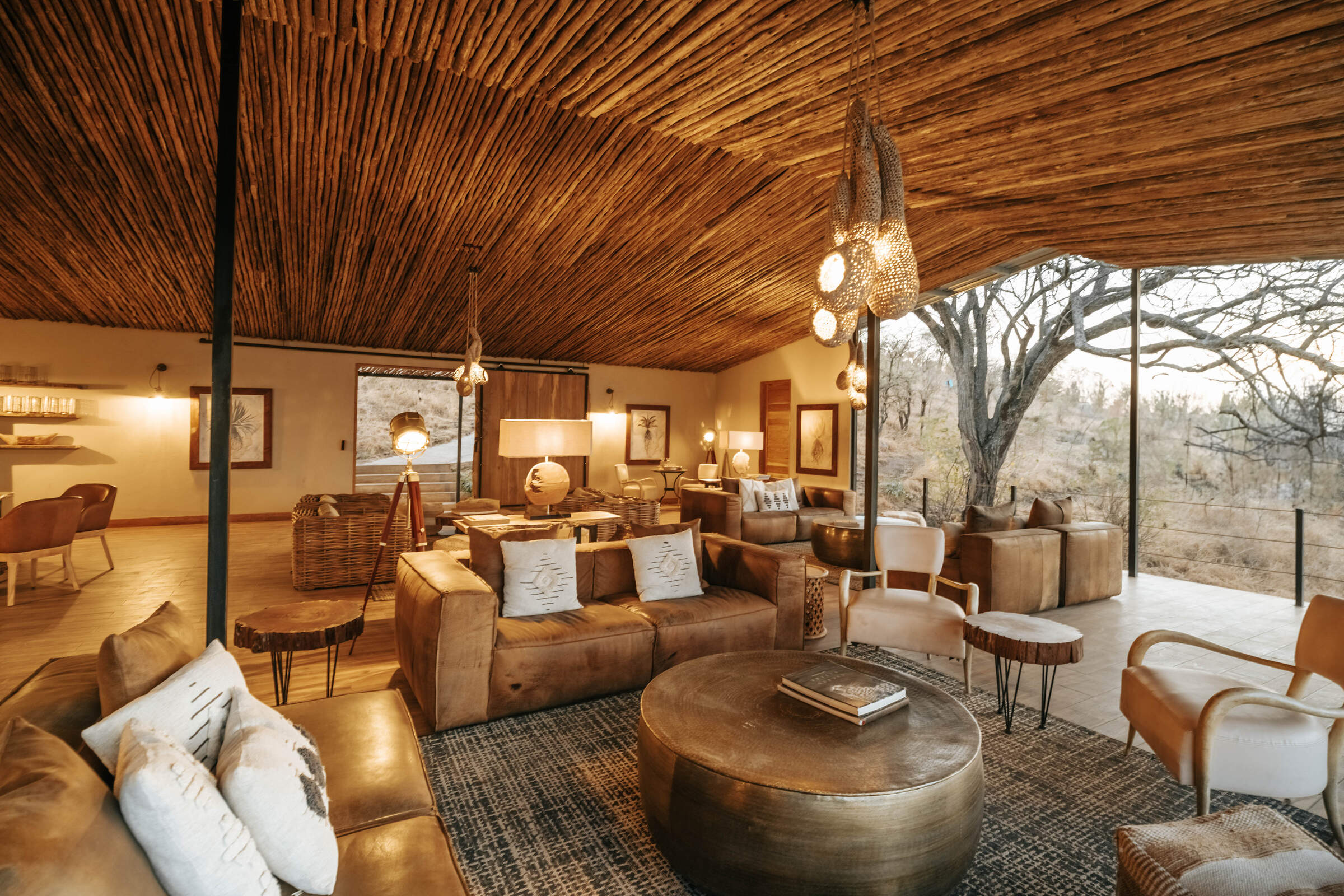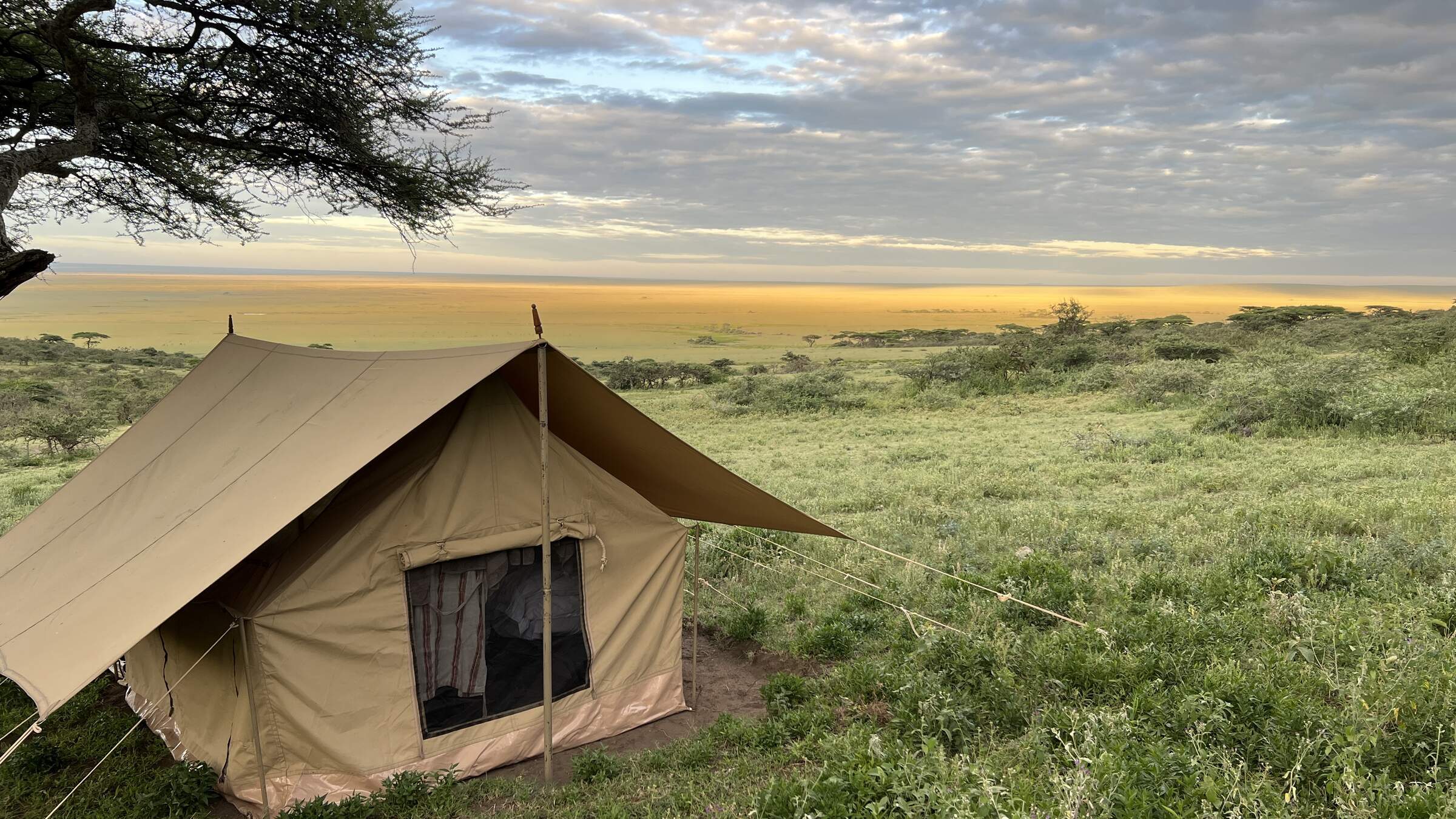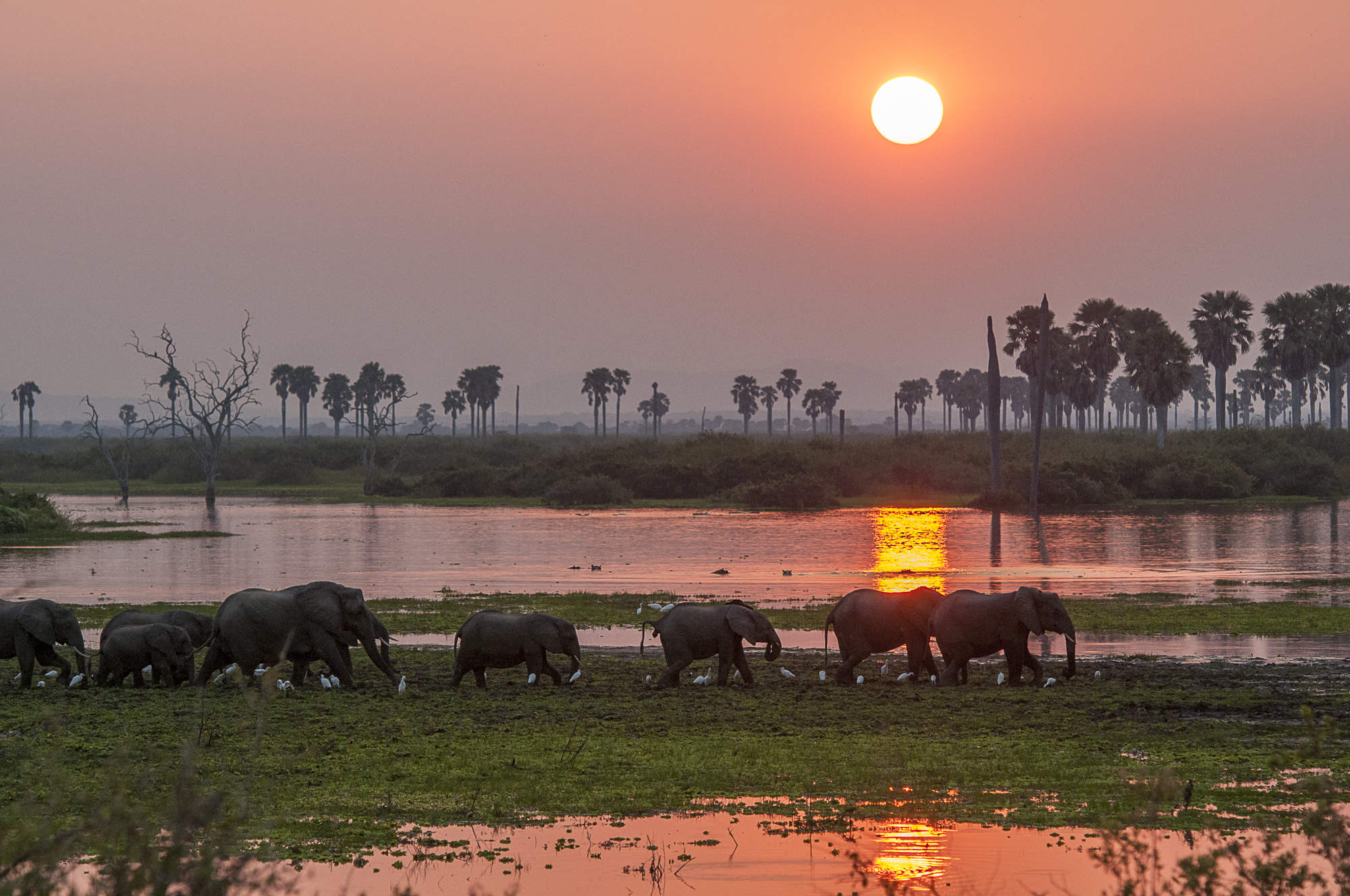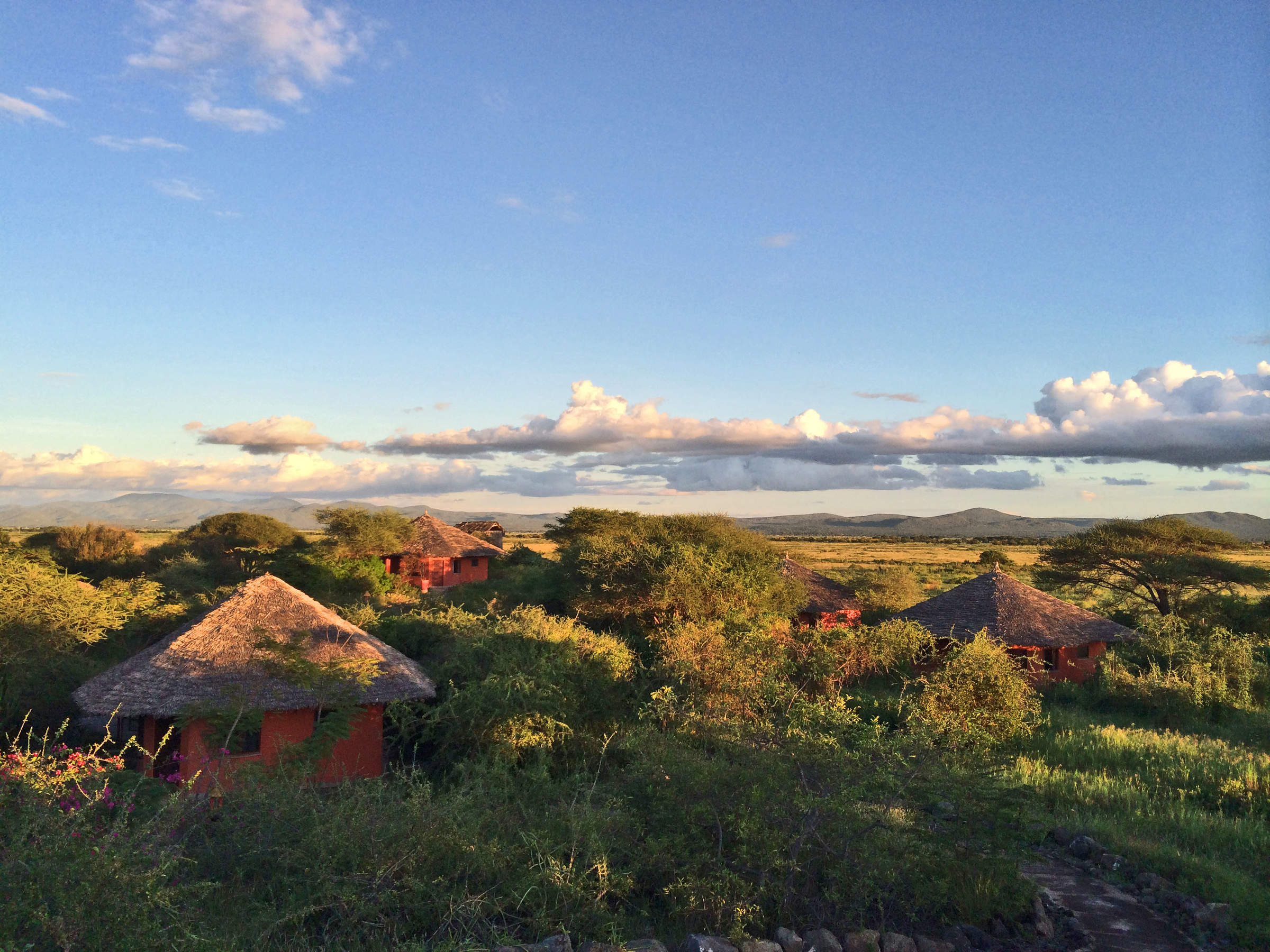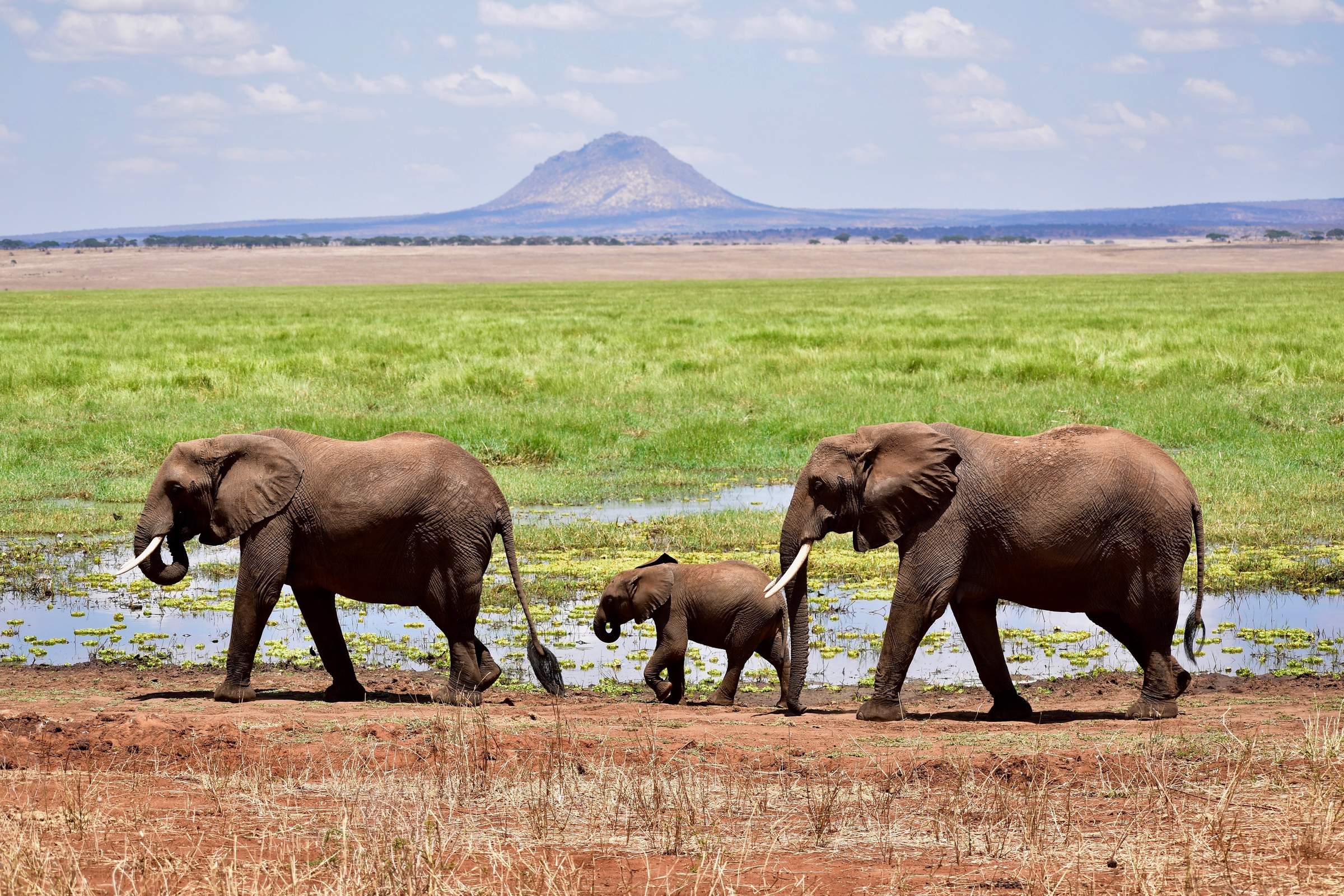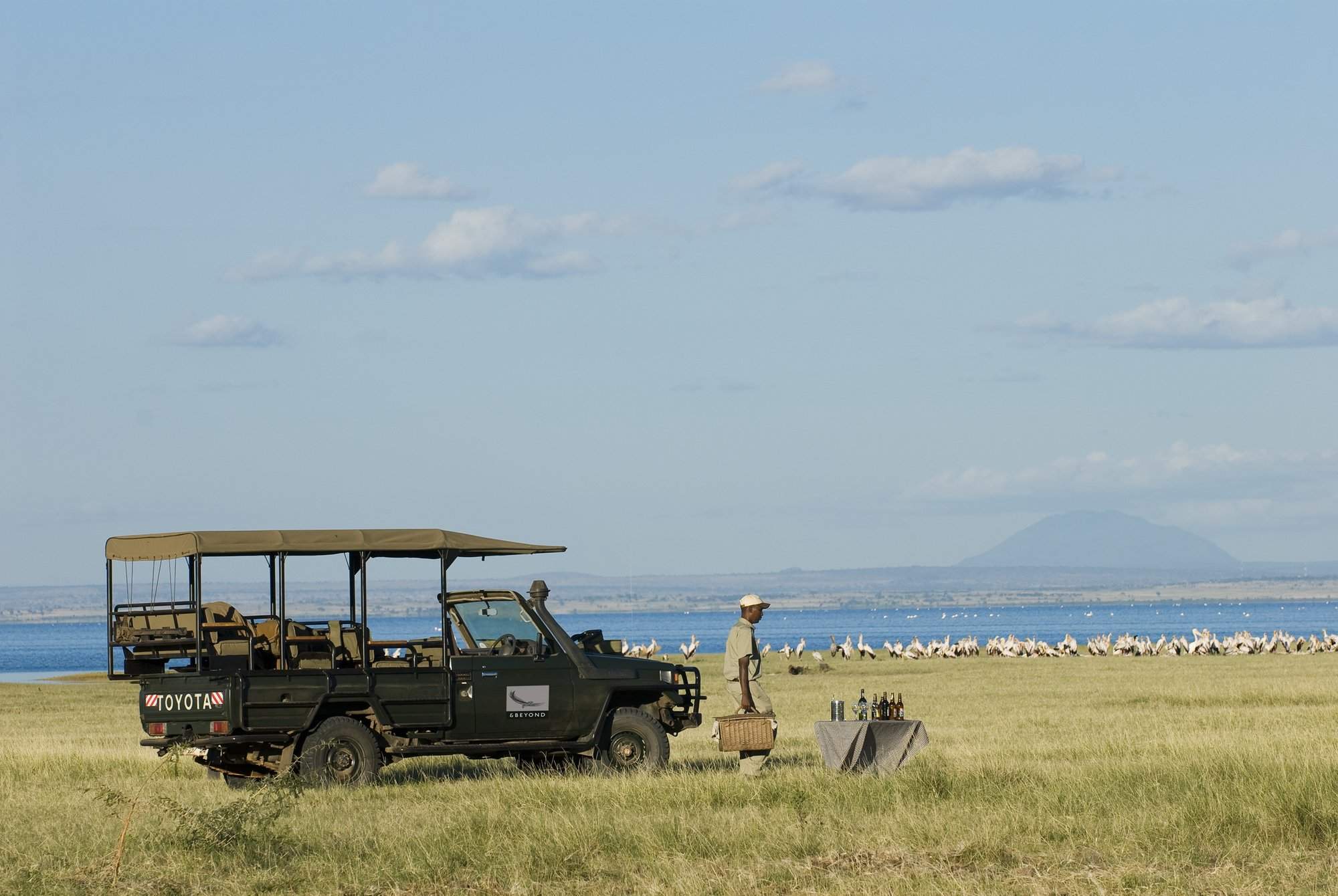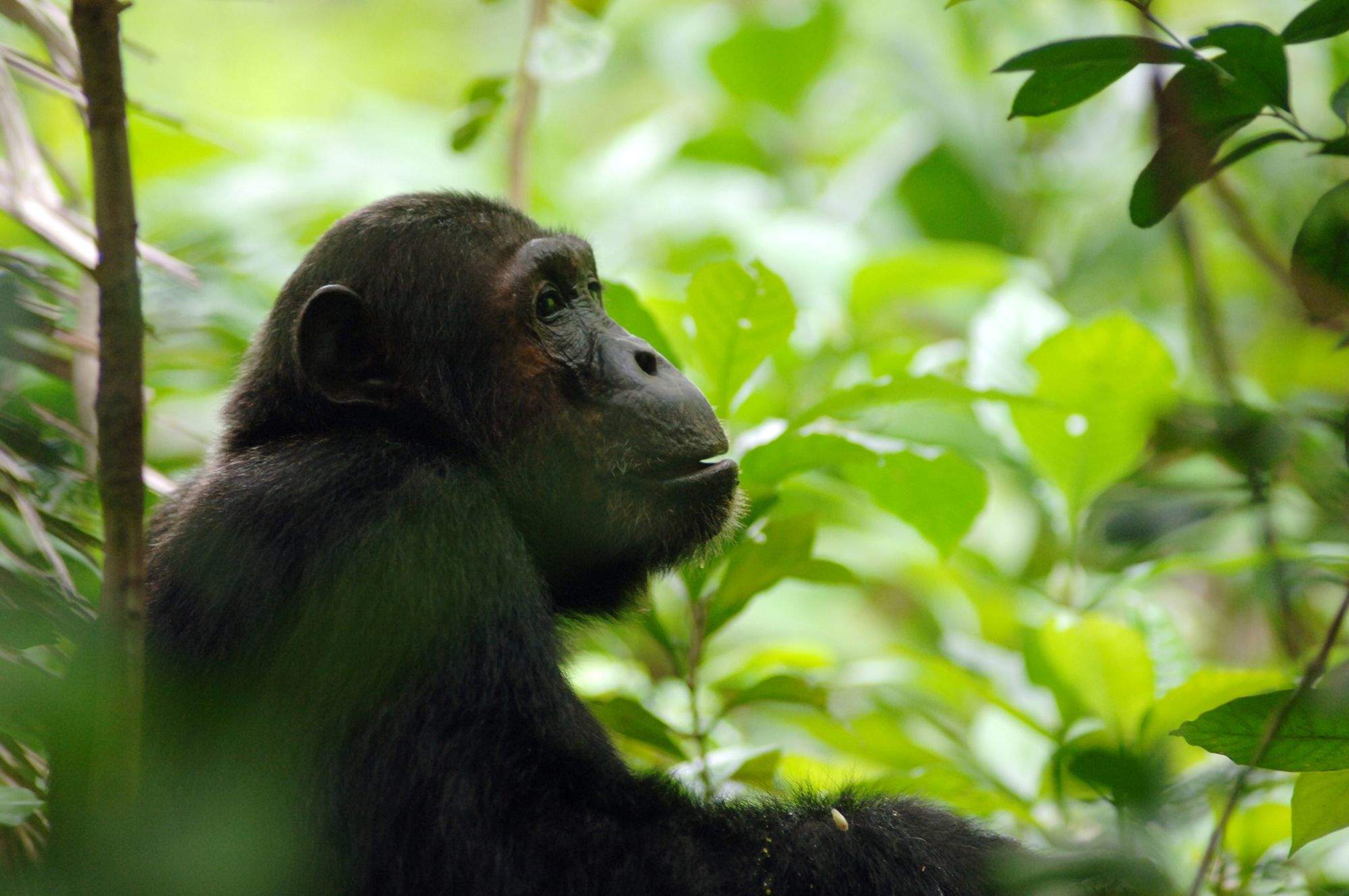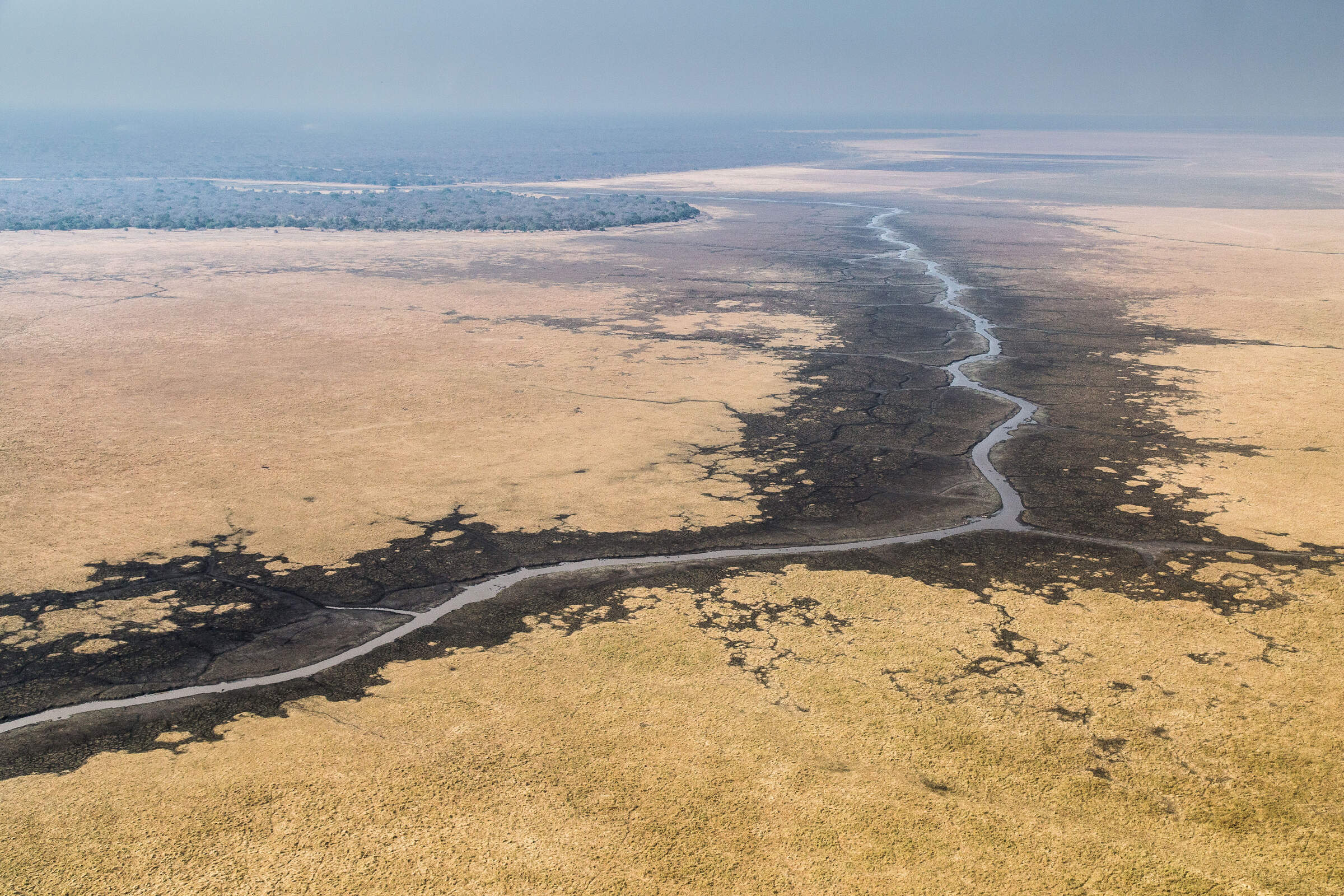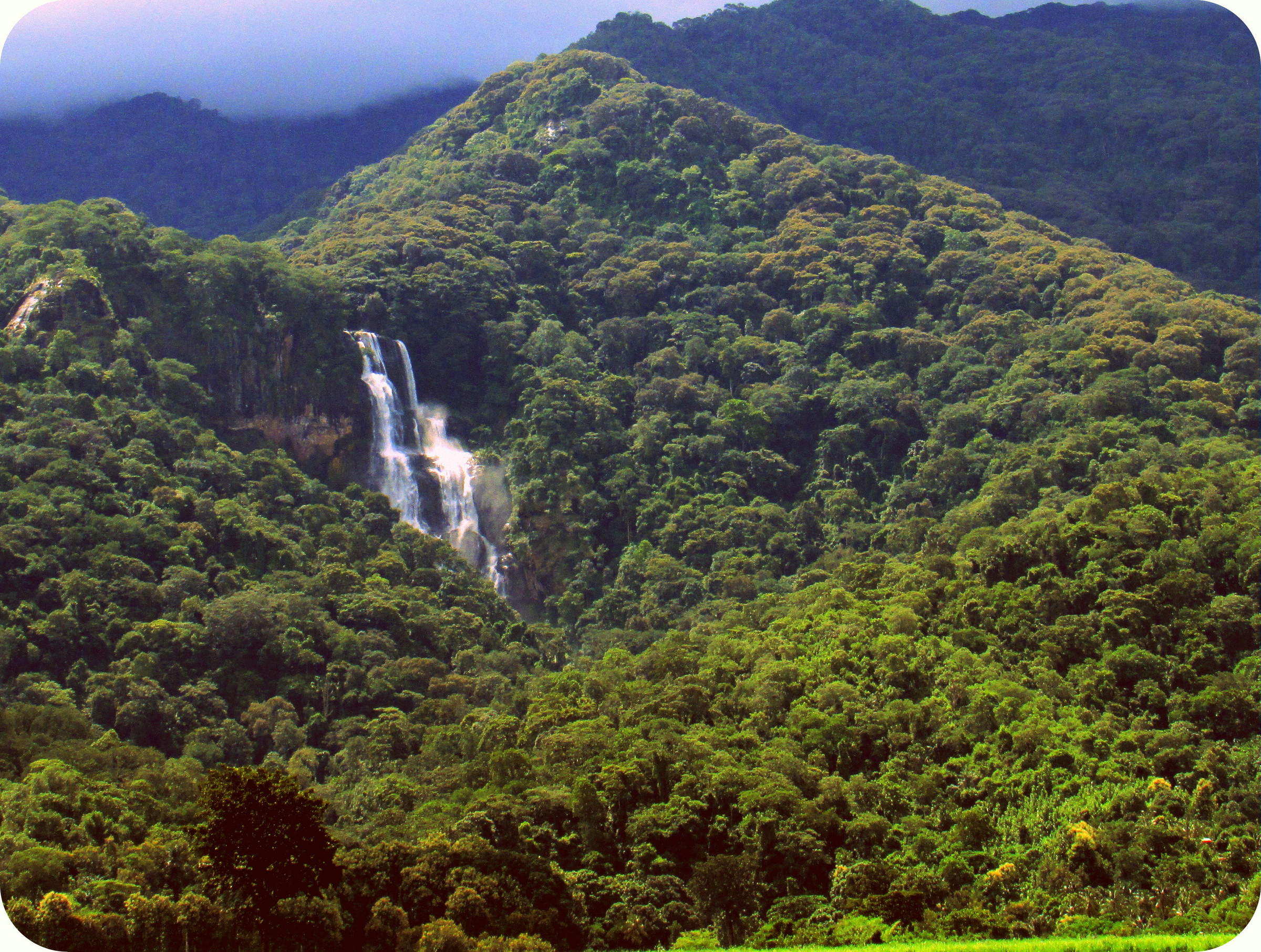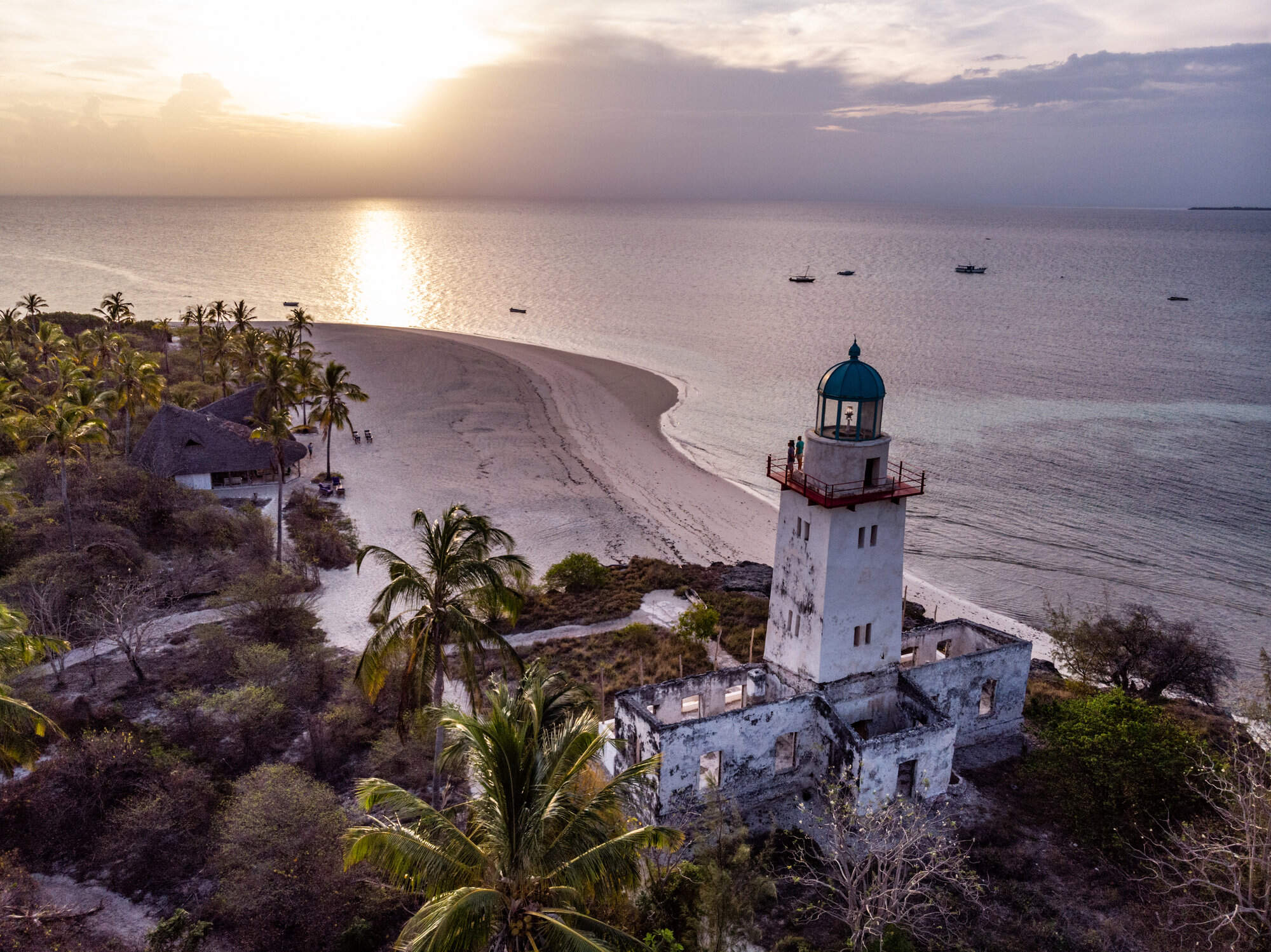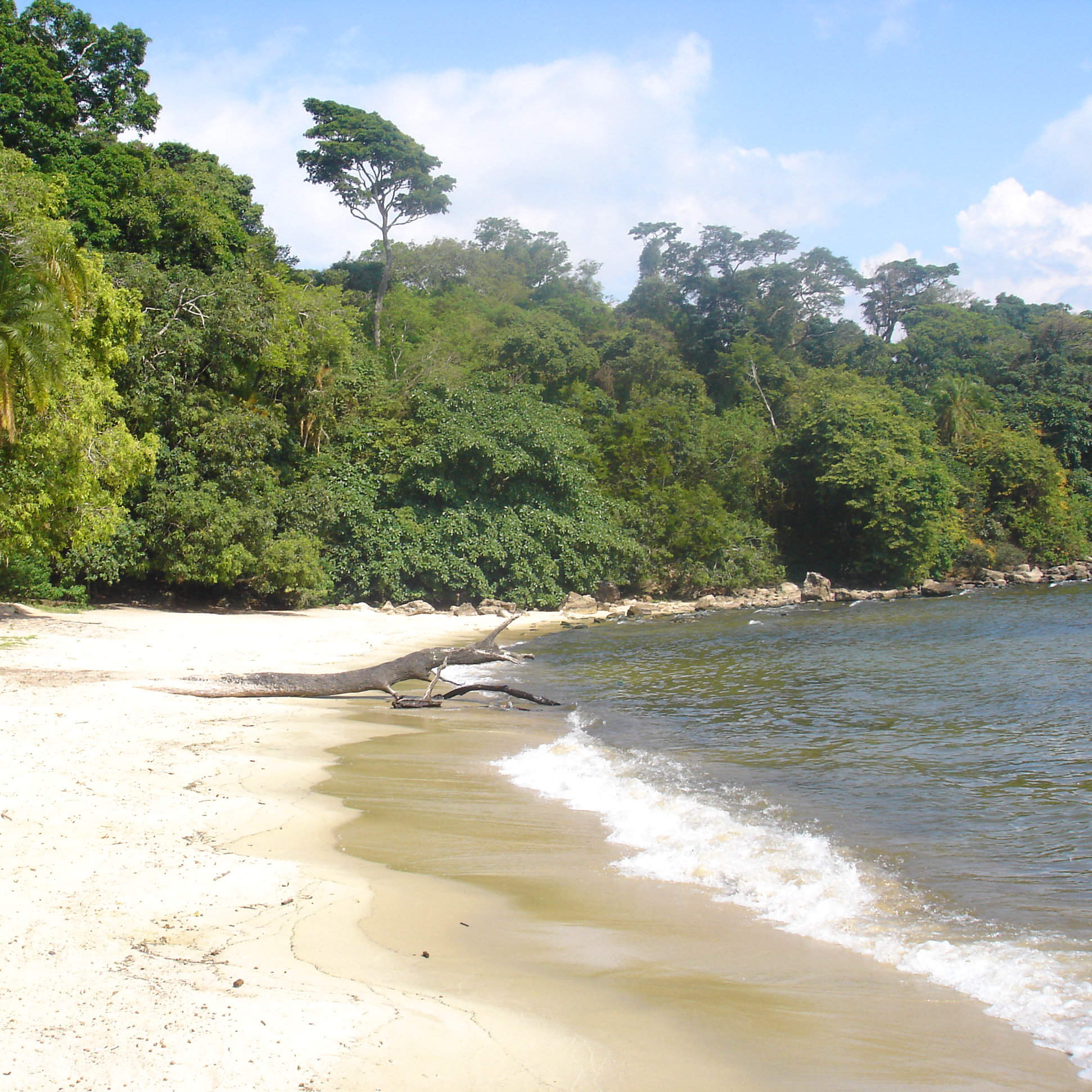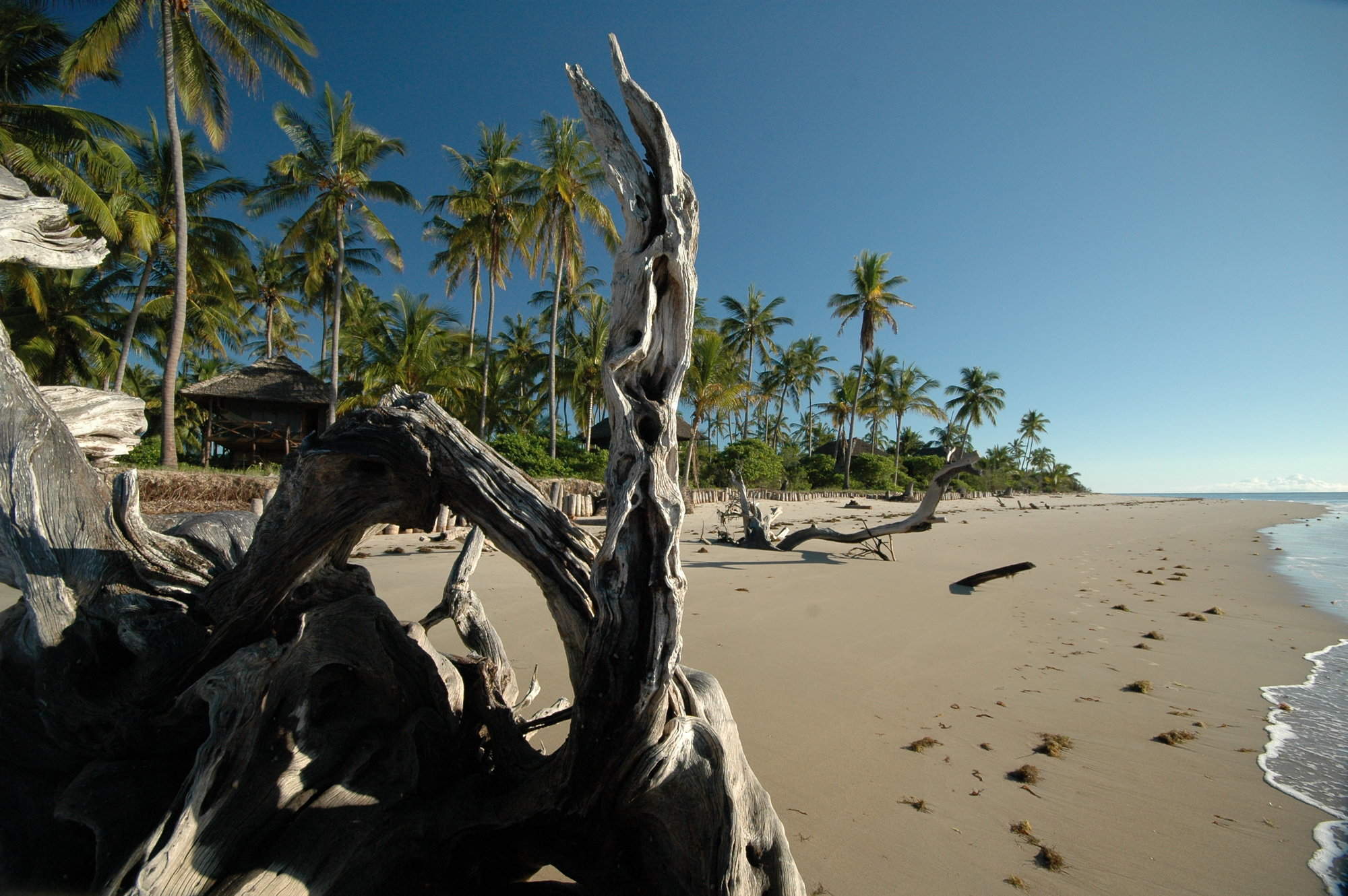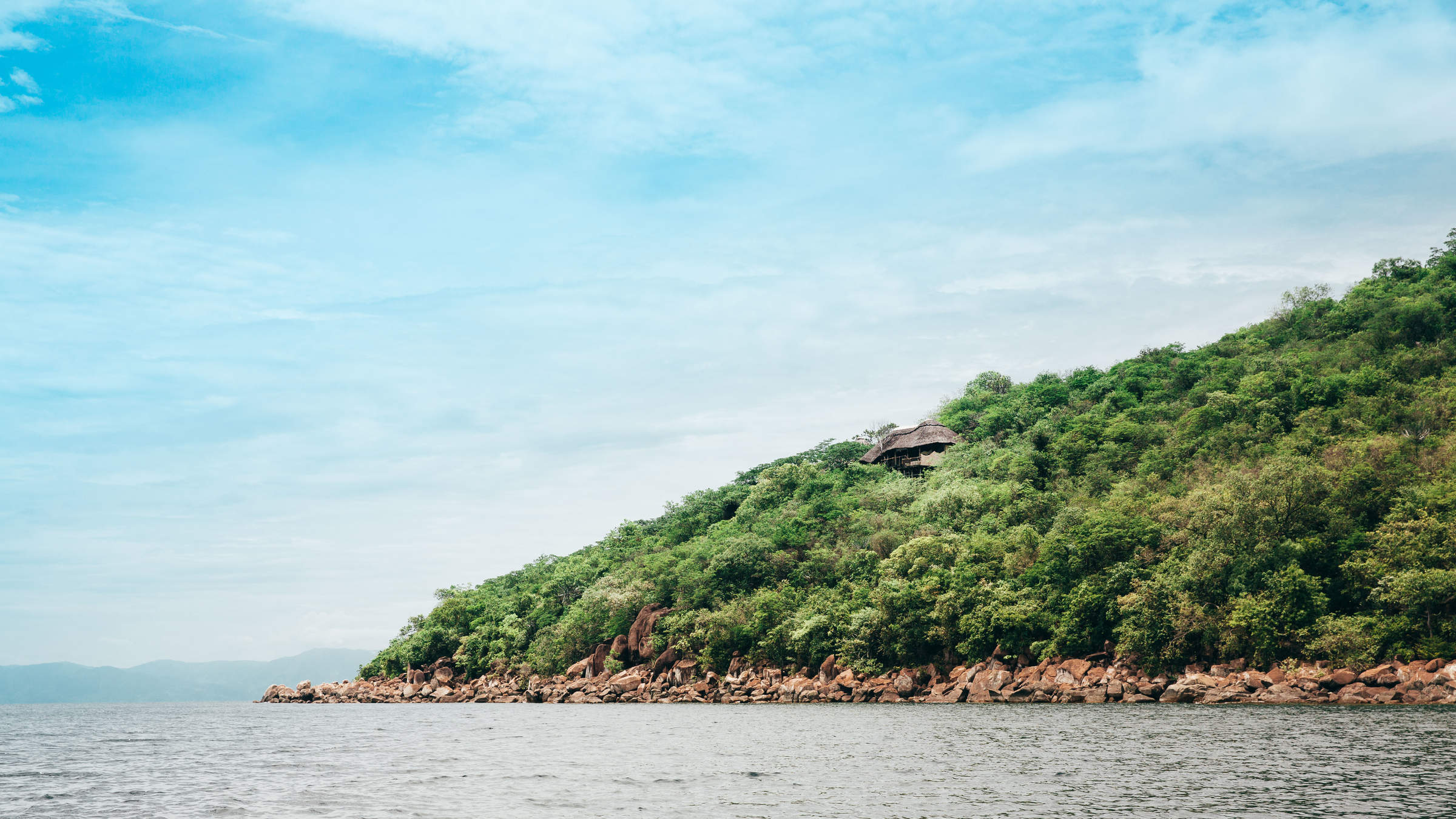Nomad Serengeti Safari Camp: Our full report
Nomad Serengeti Safari Camp is a classic tented mobile camp for up to 14 guests.
The camp changes location several times a year, broadly following the wildebeest migration around Tanzania’s Serengeti National Park, when hundreds of thousands of animals move through the ecosystem.While the pattern of the migration varies from year to year, it runs from south to north, roughly between December and October. In line with this, Nomad Serengeti spends the start of the season, from around December to April, in the southern plains area and around Lake Ndutu, where the wildebeest herds spread out widely to graze and calve on the open plains. In May it usually moves to the Moru area of the central Serengeti, continuing north in June and July, when it's normally based in the Western Corridor and Grumeti area. And from July to October, the camp is based in its northernmost point, in the northern Kogatende area. During November, it moves back to the Moru area, on its way to the south. For more on the migration's movements, see our moving map of the Serengeti migration here.
While Nomad Serengeti isn't luxurious, it does have a veteran, colonial safari style and the furnishings are good quality. However, as it moves frequently, it has remained quite simple. For example, the showers are bucket showers with hot water delivered when requested, and the flush toilets are chemical loos.
One main public tent at Nomad Serengeti Safari Camp combines the lounge and dining area or mess. This tent is completely open at the front to make the most of the views, and the floors are covered with large woven rugs.
In the lounge – a comfortable and relaxing place to while away a few hours – a couple of inviting sofas and canvas chairs are clustered around large wicker crates for tables. The soft furnishings, themed by a washed-out red-and-cream stripe pattern, help to create the low-key but stylish feel typical of Nomad camps. Wooden side tables and solar-powered electric lights disguised as storm lanterns enhance the overall colonial style. At one end is a bookshelf with a coffee table, wildlife books and a few board games. There is also a battery-charging station for guests' cameras, phones and other gadgets.
The dining area is a similar size to the lounge, and is mostly taken up by a table set for communal meals. Guests are free to help themselves at any time to drinks from the informal bar and coolbox fridge, although there is usually a member of staff to assist.
Nomad Serengeti Safari Camp has seven spacious guest tents, two of which are set up as a family unit. The tents are spaced a good distance apart and are cleverly staggered to increase privacy. Depending on the location of the camp, the access path runs in front or behind the tents.
Each tent has twin or double beds housed in a distressed iron bed-frame complemented by a patterned hanging wall awning on the partition wall, a leather-topped writing desk and side tables, a canvas rack for your luggage and antique-style iron and canvas lamps for the solar lighting. On our last visit, in June 2023, we thought that the use of natural materials and sun-bleached colours worked really well, and to stylish effect. For storing valuables, each tent is provided a lockable canvas pouch and is given to the camp manager.
Behind the bedrooms, and continuing the natural style, is a changing area/bathroom. There’s plenty of room here for towel racks and hanging clothes along with a stainless-steel washbasin set into a whitewashed wooden table. The cold tap is plumbed, and you'll find a Thermos of hot washing water, which is replenished regularly. Behind this is a flushing eco-toilet and a safari shower, with hot water brought on request to fill the overhead reservoir.
The family tent is made up of two standard tents interconnected with a communal lounge area with a sofa and vintage traveling trunk as a coffee table. Each room has its own ensuite bathroom.
As in the lounge and mess, lighting in the guest tents is powered by solar-charged batteries. Each tent is also equipped with a torch, and an emergency airhorn, in the unlikely event you need to get the attention of a member of staff during the night.
The service at Nomad Serengeti Safari Camp is very good: polite, friendly and well managed. During your stay you’ll be hosted along your personal guide along with the friendly in-camp team, who will do their best to ensure that you are well looked after.
Activities based out of this Serengeti camp focus entirely on game drives. You can head out both in the morning and then again in the afternoon, or opt for a full-day drive, taking a packed lunch with you. Early starts of 6.00–6.30am are recommended so that you are out when the big cats are most active, but timings are always flexible.
As far as the migration is concerned, it’s important to be aware that while Nomad Serengeti Safari Camp attempts to follow the Serengeti's wildebeest herds, sites have to be booked with the TANAPA park authorities many months in advance. The camp's owners, Nomad, do their best to estimate where the migration will be but wildebeest movements are very unpredictable and although on our last visit in November 2017 during our stay of a couple of days, the camp was surrounded by hundreds of thousands of wildebeest and zebra in every direction, we were extremely lucky. Our stay before this in December 2016, the herds were scattered across the Serengeti due to the lack of rains and be prepared there can sometimes be some distance between the camp and the main concentration of herds.
Our view
Nomad Serengeti Safari Camp is a traditional bushcamp, with relatively luxurious comforts and high standards of food and service. There is a lovely balance here between immersing yourself in the wilderness, feeling truly part of the bush, and enjoying a level of luxury that is normally the preserve of a much more upmarket camp. If you want an authentic experience of bush living, while also getting close to the migration action, this would be a great choice.
Geographics
- Location
- Serengeti Migration Area, Tanzania
- Ideal length of stay
- Three to four nights allows at least two full days for game drives to watch the migration and other wildlife.
- Directions
- Access to Nomad Serengeti Safari Camp varies, depending on where the camp is located in the Serengeti. You will usually fly to the nearest airstrip, where you'll be met on arrival by your guide and transferred through the park to camp.
- Accessible by
- Fly-and-Transfer
Food & drink
- Usual board basis
- Full Board & Activities
- Food quality
- When we last stayed, in June 2023, we enjoyed the food at Nomad Serengeti Safari Camp very much, and thought that the group dining worked very well indeed; if we weren't eating a picnic out in the bush, we were in camp and eating with other guests. The camp offered a variety of international-style dishes, using fresh vegetables and lots of herbs and spices. Most dietary requirements can be catered for with advance notice.
If you have an early start you can take a packed breakfast out on safari with you. This is usually eaten at a quiet picnic site somewhere in the bush and consists of granola and yoghurt, pancakes, and bacon-and-egg sandwiches. There is also hot tea and coffee, as well as fruit juice. If you stay in camp you’ll usually be offered a buffet of cereal and fruit, as well as a full cooked breakfast.
Lunch can also be taken as a packed meal, or eaten at camp. In both cases you can usually expect fresh salad and tomatoes, as well as other light lunch options such as vegetables fritters, couscous, fishcakes, rice salad or cold meats. Dessert is usually something light and fresh like a fruit salad. Lunches may on occasion be communal, but more usually each party will eat separately.
Before dinner, guests usually gather for a drink around the campfire and swap the day's stories before sitting down to a sociable meal. We tucked into a starter of chicken with fresh mango and cucumber on one night, followed by roast pork chops, sweet potato chips and vegetables. Our second night there was homemade courgette soup, with a main of Moroccan-style chicken. Desserts included chocolate and orange mousse and baked pear. - Dining style
- Group Meals
- Dining locations
- Indoor and Outdoor Dining
- Further dining info, including room service
- The camp will organise private meals outside your tent on request.
- Drinks included
- Most drinks, with the exception of champagne and premium imported wines and spirits, are included.
Drinking water is bottled and transported in from Arusha.
Special interests
- Wildlife safaris
- Nomad Serengeti Safari Camp is a mobile camp that moves several times a year to follow Tanzania’s wildebeest migration. Though the movements of the migration can be unpredictable, the camp tries hard to predict where the main herds will be.
- See ideas for Wildlife safaris in Tanzania
Children
- Attitude towards children
- Nomad Serengeti Safari Camp enjoys hosting families, and welcomes children over the age of 6.
- Property’s age restrictions
- No children are accepted under the age of 6.
- Special activities & services
- Often the camp staff may be happy to organize and get involved in activities such as football games to occupy children when given some notice.
- Equipment
- No
- Generally recommended for children
- This is quite a wild camp, with dangerous wildlife potentially wandering through, and is best suited to older and more mature children with a genuine interest in wildlife.
- Notes
- Children are the responsibility of their parents at all times and should not be left unattended whilst in the camp.
Our travellers’ wildlife sightings from Nomad Serengeti Camp
Since mid-2018, many of our travellers who stayed at Nomad Serengeti Safari Camp have kindly recorded their wildlife sightings and shared them with us. The results are below. Click an animal to see more, and here to see more on our methodology.

100% success

100% success

100% success

94% success

94% success

93% success

93% success

88% success

86% success

81% success

50% success

38% success

31% success

30% success

13% success

8% success

8% success

0% success
Communications
- Power supply notes
- A battery inverter, powered by the generator.
- Communications
- There is intermittent cellphone reception in the Serengeti and sometimes there is reception in camp, depending on the location. There is WiFi in the main area, and may be picked up by the rooms closest to the main mess tent. Each room has a Motorola hand held radio.
- TV & radio
- None.
- Water supply
- Other
- Water supply notes
- Water is drawn from a borehole or piped from rivers. There are bucket showers and low-water-usage composting toilets.
Health & safety
- Malarial protection recommended
- Yes
- Medical care
- Nomad Serengeti Safari Camp has first-aid kits on site and in the vehicles, and some staff have first-aid training. In case of a serious medical problem, the camp has links to flying doctors.
- Dangerous animals
- High Risk
- Security measures
- This camp is not fenced and wildlife often comes into camp. Because of this you will be escorted around the camp at night.
- Fire safety
- There are fire extinguishers in the tents and a fire break around the camp.
Activities
4WD Safari
Birdwatching
Hot air ballooning
Private activities
Extras
- Disabled access
- On Request
- Laundry facilities
- Laundry is included. Clothes are hand-washed by the housekeeping team and line-dried. For cultural reasons, the team will not wash ladies' underwear. Washing powder is provided in the tents.
- Money
- Nomad cannot offer any currency exchange.
- Accepted payment on location
- You can settle any extra payments in cash in US dollars or Tanzanian shillings. The camp can accept card payments; Mastercard, Vida and Amex with a 3% surcharge.
Other lodges in Serengeti Migration Area
Alternative places to stay in this same area.

